

Cruise Line Types- Figuring out what the different categories mean
Cruise line types.

One of the key elements of a happy cruise is finding the line that’s right for your particular needs. The cruise lines fall into various categories, and to help you navigate the waters (so to speak) of choosing one, we’ve created a guide to what these categories mean. Bear in mind, cruise lines can fall into more than one category, Luxury Expedition, for example, but these descriptions should help to steer you in the right direction. See which lines fall into these categories, and what amenities they offer, by visiting our All-Inclusive Chart.
CONTEMPORARY CRUISE LINES
The contemporary cruise lines offer a variety of cruise schedules and itineraries that are perfect for younger adults and family cruises. These are the lines with the largest ships, the most onboard entertainment options, and the widest variety of amenities. This great array of options allows you to choose the type of vacation experience you want once you are on board the ship.
Lines that fall into this category are:
- Aida Cruises
- Carnival Cruise Line
- Costa Cruise Lines
- Celestyal Cruises
- Fred. Olsen Cruise Lines
- P & O Cruises
- P & O Cruises Australia
- Star Cruises
- Your Cuba Cruise
These lines are well suited for:
- Families with young children
- Families with teenagers
- Family reunions and multi-generational families
- 20- and 30-somethings looking for light adventure and various sports activities
- 40- and 50-somethings looking for a couple’s vacation
- Travelers looking for a wide array of activities
- Seniors looking for new friends
- Solo travelers
- Couples looking for romantic getaways
- Destination weddings
- Adventure travelers looking for high thrills
UPSCALE CONTEMPORARY CRUISE LINES
These lines offer all the benefits of the contemporary cruise lines, but take things a step futher, with finer amenities and a more upscale environment.
- MSC Cruises
- Norwegian Cruise Line (NCL)
- Royal Caribbean International (RCI)
PREMIUM CRUISE LINES
Premium cruise lines tend to be large, but not mega-type ships, though they offer similar voyages, plus voyages to exotic locales. Due to the size of these ships, they do not dock in the heart of the town or village like the ultra-premium lines. These lines cater to travelers seeking luxurious accommodations, enhanced dining, excellent service, extensive activities, and enrichment opportunities. The onboard experience is sophisticated and the service above average. These lines will have enhanced spa and wine options. They tend to cater to more mature and discerning passengers who are seeking a sophisticated level of service, ship amenities, and accommodations at somewhat higher prices. These lines also offer children’s programs for all ages.
- Celebrity Cruises
- Disney Cruise Line
- Holland America Line
- Princess Cruises
- Those seeking both classic and modern luxury, contemporary and conservative design, and dining experiences in which the atmosphere is as important as the food and wine.
- Families wishing to travel with young children where the environment is a little more subdued.
- Families who are looking for an educational experience for the family
ULTRA-PREMIUM CRUISE LINES
The ultra-premium cruise lines tend to have smaller ships and offer voyages to popular ports, and unique itineraries featuring smaller, less-traveled destinations. They primarily cater to discerning passengers who are seeking a sophisticated level of service, ship amenities, and accommodations at upscale prices. Some lines may offer numerous included amenities. These lines are generally priced higher than the premium cruise lines.
- Azamara Club Cruises
- Cunard Line
- Oceania Cruises
- Viking Ocean Cruises
- Windstar Cruises
- Seasoned travelers
- Adults who are destination-oriented and enjoy the finer things in life
- Travelers looking for a boutique experience with a destination immersion.
- Travelers who find the small touches make all the difference—from the service to the food to the ships themselves.
- Adults seeking a “country club casual” experience with very upscale surroundings and amenities
ULTRA-LUXURY CRUISE LINES
These are high end cruises, both in price and in amenities. They are designed for those who desire the finer things in life and have the budget for luxury. These cruise lines specialize in service and will cater to the traveler’s every desire.
- Crystal Cruises
- Hapag Lloyd Cruises
- Paul Gauguin Cruises
- Regent Seven Seas
- Sea Cloud Cruises
- SeaDream Yacht Club
- Adults looking for a small ship and boutique type of experience
- Cruisers seeking a destination immersion
- Travelers seeking an over-the-top experience with ultra-luxury everything
- Cruises seeking an international atmosphere
- Travelers seeking a large ship with high-end amenities
- Cruisers with a great deal of knowledge about the fine arts and cuisine, and are experts in matters of taste
- Travelers looking for exceptional service and a level of comfort and style rare in today’s world
SMALL SHIP CRUISES
Small ships fill a niche for cruisers that are looking for more in-depth exploration of the regions they visit. They can visit ports that are inaccessible to larger ships, and exotic itineraries are the standard. Most river cruise ships and almost all of the luxury lines have ships that fall into this category.
- Blount Small Ship Adventures
- Blue Lagoon Cruises
- Captain Cook Cruises
- Great Lakes Cruise Company
- Hebridean Island Cruises
- Pearl Seas Cruises
- Saga Holidays, Ltd.
- Swan Hellenic Discovery Cruises
- Tauck Small Ship Cruising
- Voyages to Antiquity
- Adults looking for a sophisticated, intimate small ship experience
- Travelers seeking an educational experience and a vacation filled with history, and culture
- Seasoned travelers and, adults who are destination-oriented
- Those seeking to meet experts in their field who have a vast knowledge of the cities visited
- Those who enjoy traveling and enjoying the company of conversation with noteworthy academic experts
RIVER CRUISES
Unlike ocean cruises, rivers provide easy access to city centers. Passengers sail directly into the heart of every destination and dock in the middle of town, then walk right off the ship and move easily into whatever city or town you are visiting. You spend less time getting there and more time being there. A river cruise allows for a more intimate experience as well. Because most of these ships accommodate only 30 to 200 guests, it is easier to meet your traveling companions. You can share a drink with the couple you met on the day’s tour or dine with interesting passengers in an open-seating restaurant. Another benefit: you can also forget about waiting in long lines to embark, debark, or have a meal. These river cruises are immensely popular and keep growing. Many lines have begun adding amenities previously restricted to ocean cruise lines, such as French balconies attached to the rooms.
U.S. River Cruise Lines
- American Cruise Lines
- American Queen Steamboat Co.
Contemporary River Cruise Lines
- AFC Vacations
- CroisiEurope
- Farah Nile Cruises
- Imperial River Cruises
- President Cruises (China)
- Vantage Travel
Upscale Contemporary River Cruise Lines
- Amras Cruises
- Emerald Waterways
- St. Lawrence Cruise Lines
- Value World Tours, Inc.
- World Quest Cruises
- YMT Vacations
Premium River Cruise Lines
- Amadeus Cruises
- Avalon Waterways Haimark Line-Luxury Coastal Expeditions
- Pandaw River Cruises
- Sonesta Cruise Collection
- Tauck River Cruising
Luxury River Cruise Lines
- AmaWaterways
- A-ROSA Cruises
- Crystal River Cruises
- Uniworld Boutique River Cruise Collection
- Viking River Cruises
- Those seeking an immersion experience of the regions they visit, in wine, food, and culture.
LUXURY HOTEL BARGES
The hotel barge became popular in the 1960s, and has now grown into a very large network of hundreds operating on the rivers and canals of France, Belgium, Germany, Scotland, and the UK. These luxury hotel barges vary greatly in size, configuration, scale and quality of accommodations, and standard and amount of catering. The largest barges take twenty-four guests, the smallest just four. All hotel barges have a high staff-to-guest ratio, but the smaller barges typically provide more personal attention and perhaps comfort. You can expect to get to know the other travelers well due to the intimate environment. These luxury hotel barges are wonderful for chartering and having your own private vacation.
- Abercrombie and Kent
- Afloat in France
- European Waterways
- France Cruises
- French Country Waterways
- The Barge Company
- Destination-oriented travelers
- Travelers who enjoy the finer things in life and are looking for a small ship or boutique type of experience.
- Travelers seeking an immersion in small towns and villages
EXPEDITION CRUISE LINES
Expedition cruise lines typically attract adventure and unusual thrills seekers. These lines have very unique and exotic destinations such as the Galapagos Islands, Antarctica, and Greenland. Expedition cruises tend to focus on very isolated scenery or wildlife up- close and personal. On an expedition line, you will experience undergo a multitude of new experiences: new cultures, new foods, and new smells, as all of your senses are awakened as and you commune with nature. The amenities range from simple accommodations to ultra-luxury environments.
- Adventure Smith Explorations
- Alaskan Dream Cruises
- Fantasy Cruises
- G Adventures
- Hurtigruten
- Lindblad Expeditions
- Poseidon Expeditions
- Sanctuary Retreats
- Semester at Sea
- Un-Cruise Adventures
- Travelers seeking eco- friendly expeditions
- Those seeking remote scenery and wildlife viewing
- Those who may be willing to forego luxurious amenities in exchange for remote locations with exotic birds and animals.
- Travelers seeking a small ship experience with high impact adventure
- Travelers looking for a small ship experience
- Those looking for expedition and unique cruises off the beaten track
LINES WITH SAILING VESSELS AND YACHTS
This segment of the cruise industry is unusual, offering a different type of experience and ship. Seasoned travelers as well as budget- conscious travelers will have an interest in these lines. These typically smaller cruise lines offer immersion experiences in at various destinations. Some are yachts, sail-assisted ships, and dual-purpose cargo/passenger ships. All generally are regarded as the “”specialty lines.”
- Bora Bora Cruises
- Festiva Sailing Vacations
- Island Windjammers
- North Star Cruises Australia
- Star Clippers
- Travelers seeking an educational experience and a vacation filled with history and culture
- Highly educated travelers looking for an historically rich vacation
- Those who enjoy an educational type of vacation

All Things Cruise is dedicated to the joy of travel. Specializing in ocean, river, ultra-luxury, small ship and expedition cruises.
Subscribe for travel updates, news and great offers directly from the cruise lines!


World’s Largest 26MW Offshore Wind Turbine Rolls Off Production Line In China

Divers Raise White Ensign Over Wreck Of 1st Surface Ship Lost With All Hands In WWII

Watch: First Video Of New Zealand Navy’s Sunken Ship Reveals Diesel Leak In Samoa

London Gateway To Become UK’s Largest Container Port With £1 Billion Investment

Different Types of Cruise Ships Explained
We are often left in awe looking at the magnificent engineering marvels called the cruise ships. In our previous article, we had a detailed discussion about the differences between cruise ships and their former counterparts called ocean liners, which were once the only reliable means of global passenger transportation before the revolutionizing advent of aviation.
The indispensability of passenger shipping as the monopoly in public intercontinental travel gradually waned away roughly coinciding with the same timeline as the concept of ocean liners saw a departure, thanks to the flourishing of the aviation sector, and cruise ships became increasingly synonymous with passenger vessels .
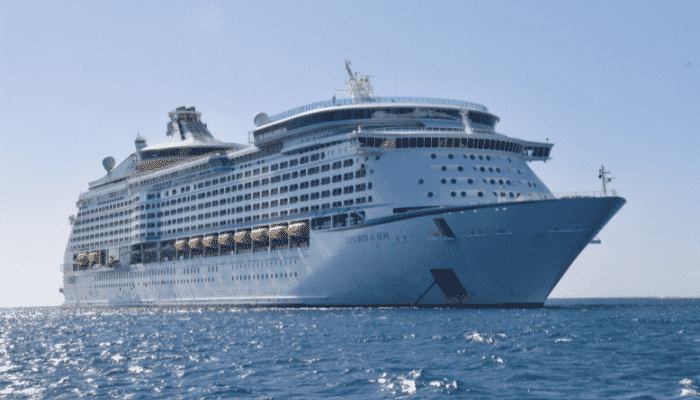
As contrary to ocean liners which were commercial vessels for passenger transportation and sometimes carriage of cargo, mail services and other utilities regularly, cruise vessels are mostly for pleasure purposes and tourism.
They are solely dedicated to the hospitality and amenities of the passengers while onboard for vacation, excursions or pleasure. While we have described the differences between ocean liners and cruisers, let us now look at the different types of cruise ships that commonly exist.
Different Sizes of Cruise Ships
Cruise ships can be of various types and sizes. Speaking of sizes, like other cargo or general-purpose ships, passenger ships can be categorized as being of multiple sizes depending on operations, service location, purpose, passenger preference, and overall business scenario.
Furthermore, the size of the vessel is a simple indicator of the number of passengers it can sustain onboard and the extent of the facilities and amenities it can cater to.
A particular cruise line providing passenger services can also have multiple sizes of ships in its fleet based on the requirements.
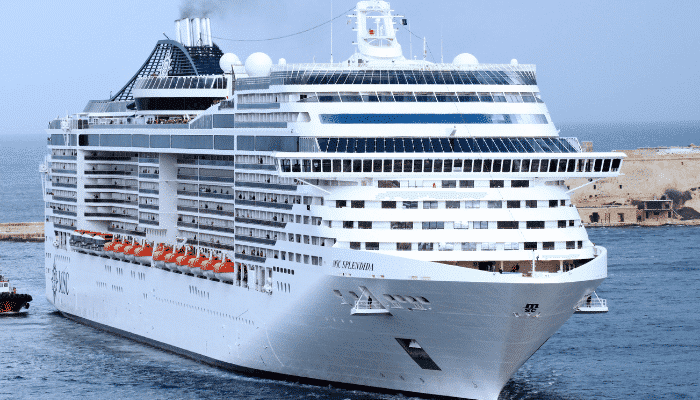
For the past decades, cruise ships have increased considerably in size and have evolved to accommodate a large number of passengers and at the same time provide a plethora of modern amenities which could not have been envisaged before.
Based on sizes and carrying capacity, cruise ships can be categorized into the following types:
Mega Cruise Ships
These are the largest of their kind and are known to accommodate more than 5000 passengers on board! When ocean liners were still predominant, cruise ships were seldom known to exceed 50000 GT in terms of their size. However, as said before, over the years with improved technology and innovation, cruise ship sizes have increased manifold.
In terms of their tonnage capacity, mega-cruise ships are very much above 135000 GT. Currently, there are more than 50 cruise ships in service having over 135000 Gt and are classified under Mega Cruise Ships. They are often distinguished by their large hull and towering superstructure sizes.
The largest designated cruise ship as of present-day is the very recent Wonder of the Seas, with a whopping gross tonnage of 236860, a length of over 360 meters, a width of 65 meters, and can accommodate nearly 7000 passengers on board!
Launched in January 2022, it is slated to create history by embarking on its maiden voyage in March. In concordance with their majestic sizes, Mega Cruise Ships house state-of-the-art facilities for passenger services, luxury, and recreation, drawing parallels to ultramodern five or seven-star rated hotels.
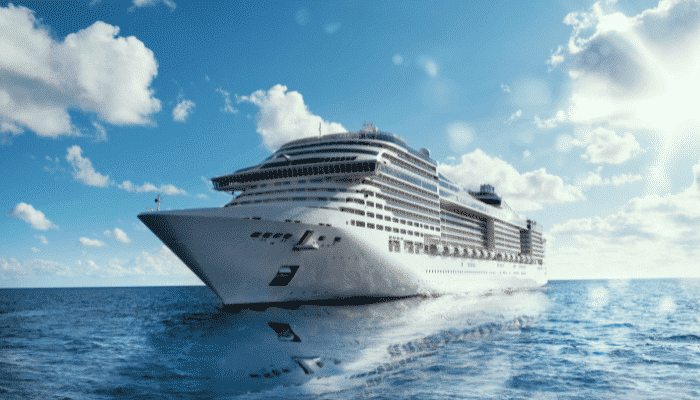
From swimming pools to movie theatres, indoor game infrastructures to world-class health centres, casinos to large restaurants and pubs, conference halls to banquets, shopping malls to pavilions, commodious suite rooms to wellness clubs, the litany can be enough to motivate holiday-seekers to amass more on their savings and plan a dream vacation.
Moreover, it is obvious that other than catering to passenger recreation and comfort, they also offer essential services like hospitals and dispensaries on a round-the-clock basis for any unwarranted needs that may arise.
Other biggest names following Wonder of the Seas are Symphony of the Seas, which held the top spot for being the largest cruise ship till last year, Harmony of the Seas, which had its realm from 2016 to 2018, Oasis of the Seas, which ruled the lot for 7 long years from 2009 to 2016, and Allure of the Seas, which became a joint claimer to the throne since its maiden voyage just a year after its predecessor (in 2010), with comparable size and capacity (very slightly less in GT).
All these are Oasis-class sister ships with GT over 200000 and operate under the parent organization, Royal Caribbean International line, an industry leader in cruise shipping tourism and hospitality headquartered in Miami, Florida, United States.
Large Cruise Ships
These are somewhat smaller than Mega Cruise Ships and can hold anywhere between 2500 to 3500 passengers for all normal purposes. In terms of tonnage capacity, they are 10000 GT or more but mostly less than 135000 GT.
Voyager of the Seas from the slightly old Voyager-class, also owned by Royal Caribbean, is an acclaimed ship of this category, but with a borderline capacity of around 3600 passengers and approximately 137000 GT, and an overall length of 310 meters, it is also often interchangeably deemed as pertaining to the category of Mega Cruise Ships.
Similar are the cases with MSC Divina, of the Fantasia-class, having 140000 GT and 3500-passenger capacity, and another recent vessel Costa Venezia, a Vista-class cruise ship, having a GT of exactly 135000 and a passenger capacity of over 4000, quite above the demarcating line for large cruisers.
Other notable names amongst many include Crown Princess (2006) belonging to the Crown-class, having 113500 GT, Celebrity Solstice from Solstice-class, rated over 120000 GT and 2850-passenger capacity, and MS Koningsdam which roughly has a capacity of just 10000 GT can hold up to 2650 passengers with doubled occupancy.
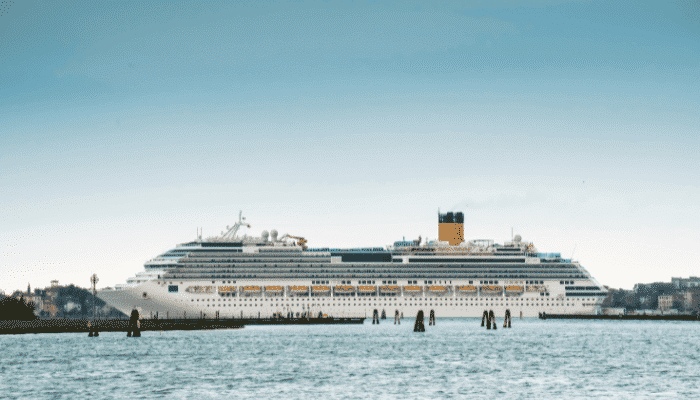
Large cruise ships can be considered as relatively smaller forms of their modern, mega variants, and started coming into being over two decades back at the turn of the century. However, like the examples cited, modern-day cruisers are commonly built in this size range with more advancements in terms of technology, design, luxury, and amenities.
Cruise ships, since mostly dedicated to tours and pleasure and seldom encounter adverse mid-sea weather conditions, can have some slack in terms of powering and structural requirements as compared to their predecessors, ocean liners.
But coming-of-age cruisers, mostly mega and large ones, have broken such conventions and have showcased significant developments.
Priorities for passenger safety and comfort have seen a sharp uptick increasingly over time.
Furthermore, with the global economy rapidly changing in a direction such that the several affluent sections of the society have continued to become richer, the predilection for cruise travel for leisure has garnered more popularity.
This has converted to more profits for cruise lines, who have also taken the opportunity to rework their business models to continue with this lucrative drive by not only providing more appealing facilities to their clientele but also stepping upon their services in terms of frequent tours and venturing into deeper territories and newer destinations across longer distances.
Hence, this has led to the modern bigger fleet having sturdier structures, escalated design efficiency, and of course, enhanced propulsive applications.
Midsized cruise ships
They are smaller than their larger counterparts, appear like their somewhat scaled-down versions, and can hold around 1500-2500 passengers. These ships have GTs of less than 100000 and more than 50000. Large global shipping lines do not go less than this category.
Likewise, they are also replete with most of the amenities and facilities sought for, though on a comparatively lesser scale. They may occasionally ply between continents and oceans but mostly travel on an intracontinental country to country basis or between different ports of call in a country.
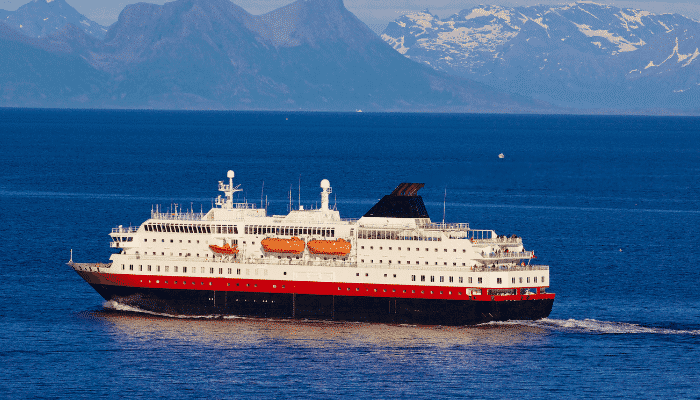
In terms of powering and structure, they are also on the lower side of bigger vessels but aesthetically they are equally attractive. A large number of vessels under this category are in operation globally. Carnival Spirit, having a tonnage of 88500 GT and a complement of over 2100 passengers, and Pacific Explorer, of approximately over 77000 GT and 2000-passenger capacity, both owned by Carnival Plc., are popular vessels in this category.
Smaller Midsized Cruise Ships
These ships can also be considered on the lower spectrum of midsized cruisers. Mostly similar, they have tonnages more or less around 50000 GT or lower and can accommodate 800-1500 passengers. They are mostly intended for intracontinental or intranational travel and do not venture into very high seas. They are also capable to travel in shallow drafts like rivers, canals/channels or lakes apart from seas.
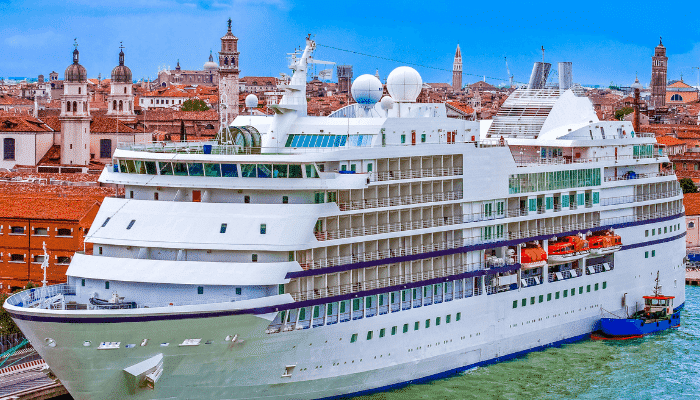
They also feature passenger pleasure and recreation attributes, but on a much-reduced scale, like small pools, indoor gaming rooms, dining and party halls, restaurants, bars, fitness centres, card rooms, conference lounges, kids’ game zones, etc.
There are numerous vessels of this type all around the world without any widely notable names. Viking Star-class Sister ships Viking Sea, Viking Star and Viking Sky, operated by Viking Ocean Cruises, and having slightly less than 50000 GT are some frontrunners in this category.
Small Cruise Ships
Any cruise vessel having a passenger-carrying capacity of less than 700-800 are coined as a small cruise ship. These ships ply in rivers, estuaries, channels, canals, confined water bodies like lakes, and sometimes in seas along or near to the coast within a specified limit.
As expected, these vessels are not structurally and functionally fit to venture into deep seas. Different kinds of bodies from liners to regional or national tourism providers operate these vessels on a time-to-time basis. The duration of a voyage in these cruisers range from a few hours to at most a day or two. As for small cruisers, the facilities onboard are limited and depends on the size of the vessel and operationality.
For larger vessels on the upper side of the capacity spectrum, for instance, 500-800, amenities for luxury and entertainment are present, though not on a scale similar to supreme level cruise ships. For even smaller cruisers with a passenger capacity of around 100-200 or lesser, most of the amenities are absent and mostly operate on an hourly basis to or from a destination or are rented out for some special occasions.
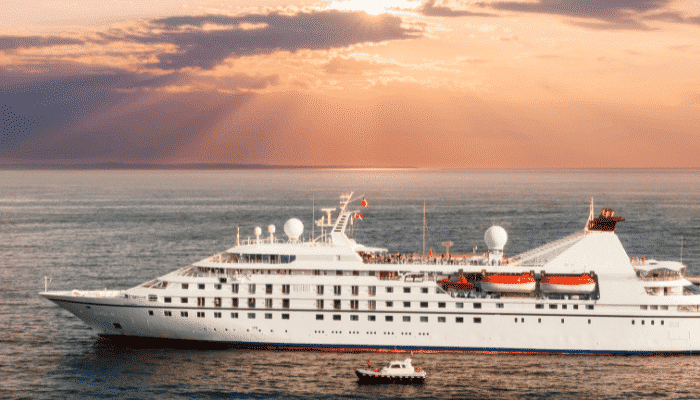
Often, they have a high demand and run on a rush booking order due to their small size and low, attractive fares. India has plenty of these vessels often in coastal areas like Mumbai, Chennai, Cochin or popular tourist destinations like Goa or the world’s largest riverine delta and mangrove reserve, Sundarbans in West Bengal. Ferries, which are exclusively referred to as small to moderate-sized vessels for carrying passengers, often along with cars and vehicles across a body of water, can be considered to belong to the last two categories.
Tonnages for ferries vary widely and can be anything as significant as over 50000 GT or as low as hardly 1000 GT. They may be intended for point-to-point or round trips with or without stops. Ferries comprise a significant part of the public transport system in several places.
As alluded to in the previous article, the concept of ferries was first conceived in Istanbul during the 19th century and can be rightfully considered as being precursors to the widespread popularization of modern-day cruise ships superseding the era of ocean liners.
Types of Cruise Ships Based on Purpose
Though cruisers are primarily categorized based on sizes, they may also be divided based on purpose, operation, and utilities.
Mainstream Cruise Ships
These types of cruise ships are the vast majority of all cruise ships that carry passengers for leisure and tours. In a broad sense, these cruisers can be anything between mega to smaller midsized with differences as described above.
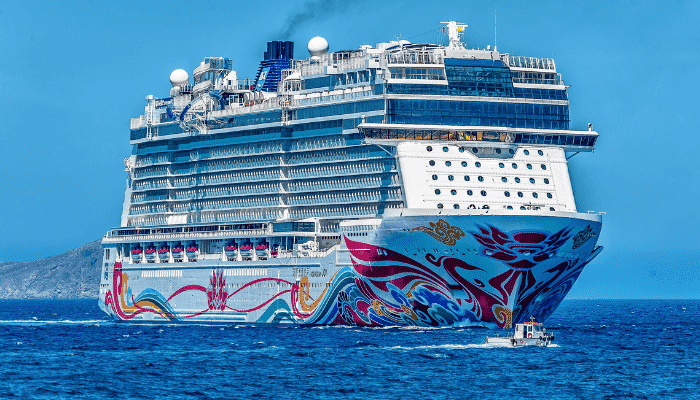
Some also tend to further categorize these vessels based on the degree of luxury and amenities from ultra-premium to semi-deluxe. They can be oceangoing, coastal or river-plying and can cater to a wide range of trips of varying durations as explained above.
Adventure Cruise Ships
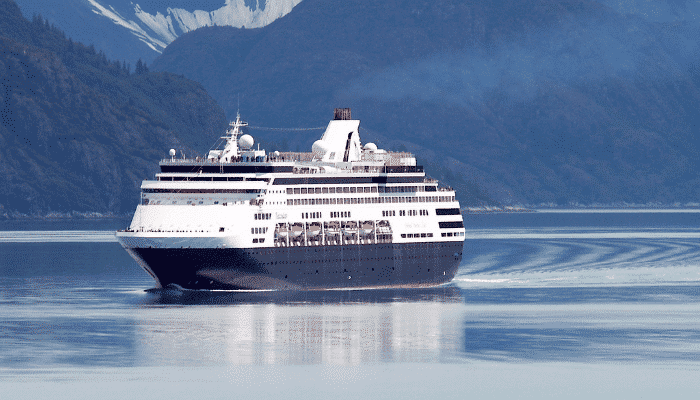
These are customized and bespoke small vessels for adventure lovers. Most of these vessels are either privately owned or are lent by agencies or dealers at certain rates. Often people set out in groups in these 10-50 passenger-capacity vessels for a myriad kinds of activities from whale watching to exploring reefs and islands. Though strictly not permitted to venture beyond certain sea limits, concerned authorities may sometimes give extra relaxations looking at sea and weather conditions or the ‘fitness’ of the vessel.
River Cruises
They are shallow-draft and low-width vessels belonging to the small cruiser category and are capable of plying in rivers for passenger tours and pleasure. They are mostly for an hourly basis and operate daily.
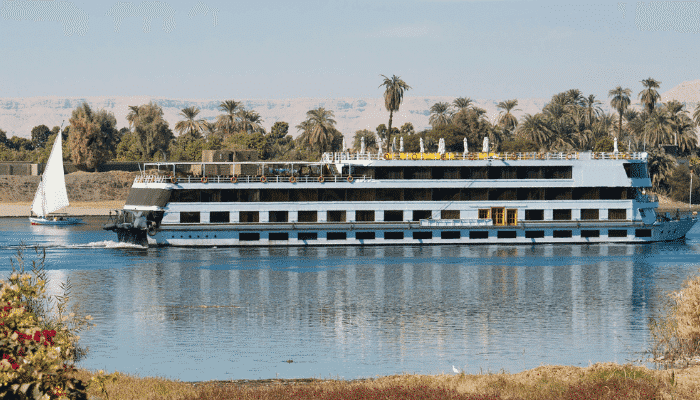
Due to their small sizes, they do not pose a major obstruction to river traffic and can manoeuvre easily when required. Other than the iconic Venice in Italy, famous rivers around the world like Nile, Amazon, Hudson, Thames and Danube offer cruise services regularly.
Hotel Ships
They mainly remain afloat in water or travel small distances and are chiefly floating hotels for a luxury experience. Most hotel ships are on rivers or seasides hemming cities and popular tourist destinations. They are generally not very big but sometimes can be exceptions when converted from large vessels out-of-service.
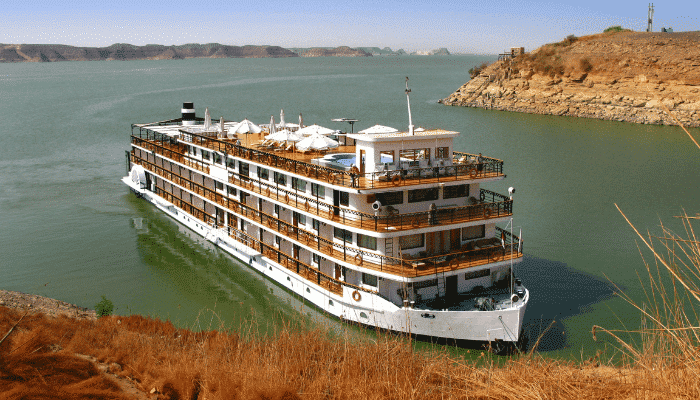
For example, Queen Elizabeth 2, which was the last oil-and-steam fired ocean liner of its kind, has been converted to a massive luxury floating hotel in Dubai after her retirement in 2008 following 40 years of operation. When on a sea coast, they remain anchored to a particular place as they are not deemed to sail. But on rivers, because of the low depth and calmness of the water, they can travel as well.
Expedition Cruises
They are specially designed vessels for venturing into the most uncharted and inhospitable places on earth like the polar regions. They are built as per ice-class regulations and everything from powering to systems are incorporated in such a way that they can sustain in harsh conditions. Such cruises are limited and only specifically authorized people are permitted to travel to such extreme locations.
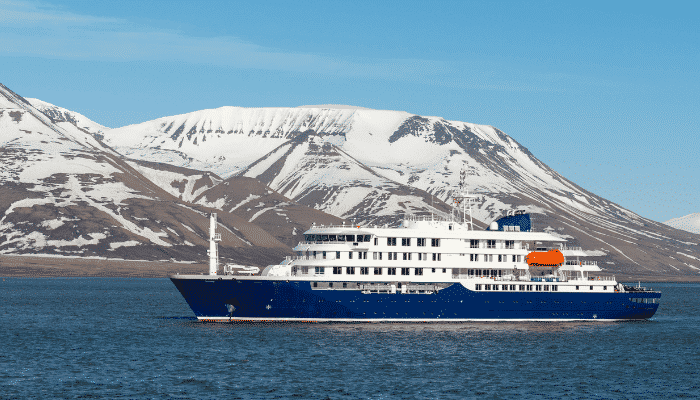
Yachts and private crafts: Such vessels are privately owned by affluent sections of the society who prefer to spend their leisure time in the water. Usually, they are quite small in size and are suited to accommodate around 20-30 people at most within the owner’s family or close circles.
You might also like to read:
- Top 10 Largest Cruise Ships in 2022
- Top 10 Most Expensive Cruise Ships in 2022
- How Are Cruise Ships Powered?
- How Do Cruise Ships Get Fresh Water?
- 8 Ways Cruise Ships Can Cause Marine Pollution
Disclaimer : The information contained in this website is for general information purposes only. While we endeavour to keep the information up to date and correct, we make no representations or warranties of any kind, express or implied, about the completeness, accuracy, reliability, suitability or availability with respect to the website or the information, products, services, or related graphics contained on the website for any purpose. Any reliance you place on such information is therefore strictly at your own risk.
In no event will we be liable for any loss or damage including without limitation, indirect or consequential loss or damage, or any loss or damage whatsoever arising from loss of data or profits arising out of, or in connection with, the use of this website.


About Author
Subhodeep is a Naval Architecture and Ocean Engineering graduate. Interested in the intricacies of marine structures and goal-based design aspects, he is dedicated to sharing and propagation of common technical knowledge within this sector, which, at this very moment, requires a turnabout to flourish back to its old glory.
Read More Articles By This Author >

Do you have info to share with us ? Suggest a correction
Daily Maritime News, Straight To Your Inbox
Sign Up To Get Daily Newsletters
Join over 60k+ people who read our daily newsletters
By subscribing, you agree to our Privacy Policy and may receive occasional deal communications; you can unsubscribe anytime.

BE THE FIRST TO COMMENT
Leave a reply.
Your email address will not be published. Required fields are marked *
Subscribe to Marine Insight Daily Newsletter
" * " indicates required fields
Marine Engineering
Marine Engine Air Compressor Marine Boiler Oily Water Separator Marine Electrical Ship Generator Ship Stabilizer
Nautical Science
Mooring Bridge Watchkeeping Ship Manoeuvring Nautical Charts Anchoring Nautical Equipment Shipboard Guidelines
Explore
Free Maritime eBooks Premium Maritime eBooks Marine Safety Financial Planning Marine Careers Maritime Law Ship Dry Dock
Shipping News Maritime Reports Videos Maritime Piracy Offshore Safety Of Life At Sea (SOLAS) MARPOL
A beginners guide to picking a cruise line

So, you think you want to take a cruise?
First, let me say that you'll likely love it. I've been cruising for nearly 30 years, on just about every line out there, and I can tell you it's a wonderful way to travel.
It's not for everyone, of course. Plenty of people have tried it once or twice and aren't fans. The world is also filled with "never cruisers" — people who, for various reasons, wouldn't even think of getting on a ship for a vacation.
But as survey after survey has shown, most people who try a cruise for the first time give it high marks — and many end up cruising again. The odds are high you'll give it high marks, too.
Still, before you can get to the point where you're raving about your life exploring the world by sea, you have a big decision ahead of you: Which line should you book?
It's not an easy decision. There are dozens of cruise lines, and no two are alike. Some only operate big ships. Some operate small ships. Some sail only in North America. Others sail all over the world. Some offer ships designed for family fun . Others don't even allow children on board .
Related: Is cruising right for you? Start by asking yourself these 7 questions
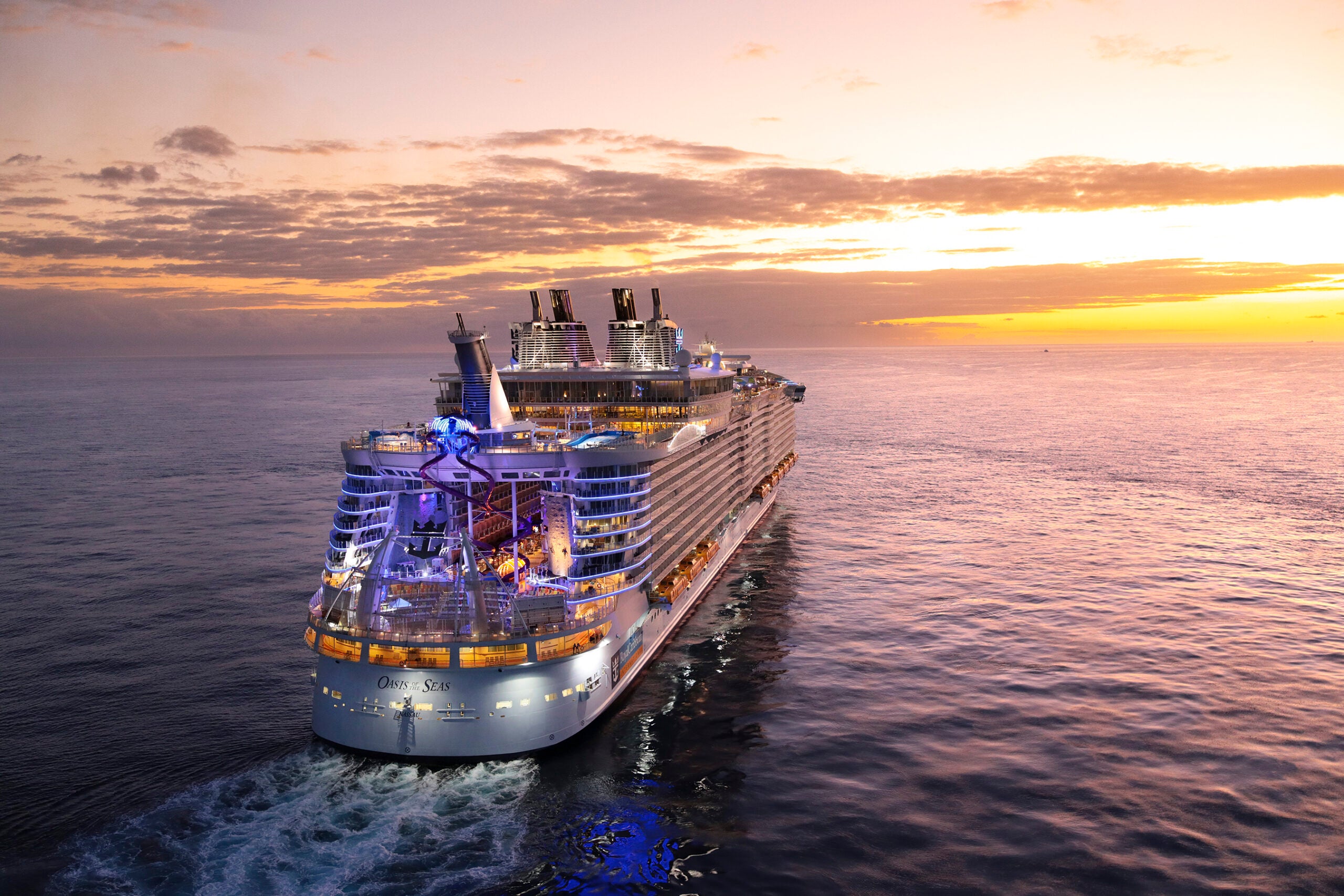
Additionally, you'll find cruise lines all over the map regarding price points. As with land-based resorts and hotels, there are cruise lines for people on the tightest of budgets and cruise lines that cater to people for whom money is no object .
In short, a cruise line exists for everyone. But depending on your preferences, not every line will do. The trick is to find the perfect cruise line for you.
In this story, I'll help you break down the options.
An overview of cruise lines
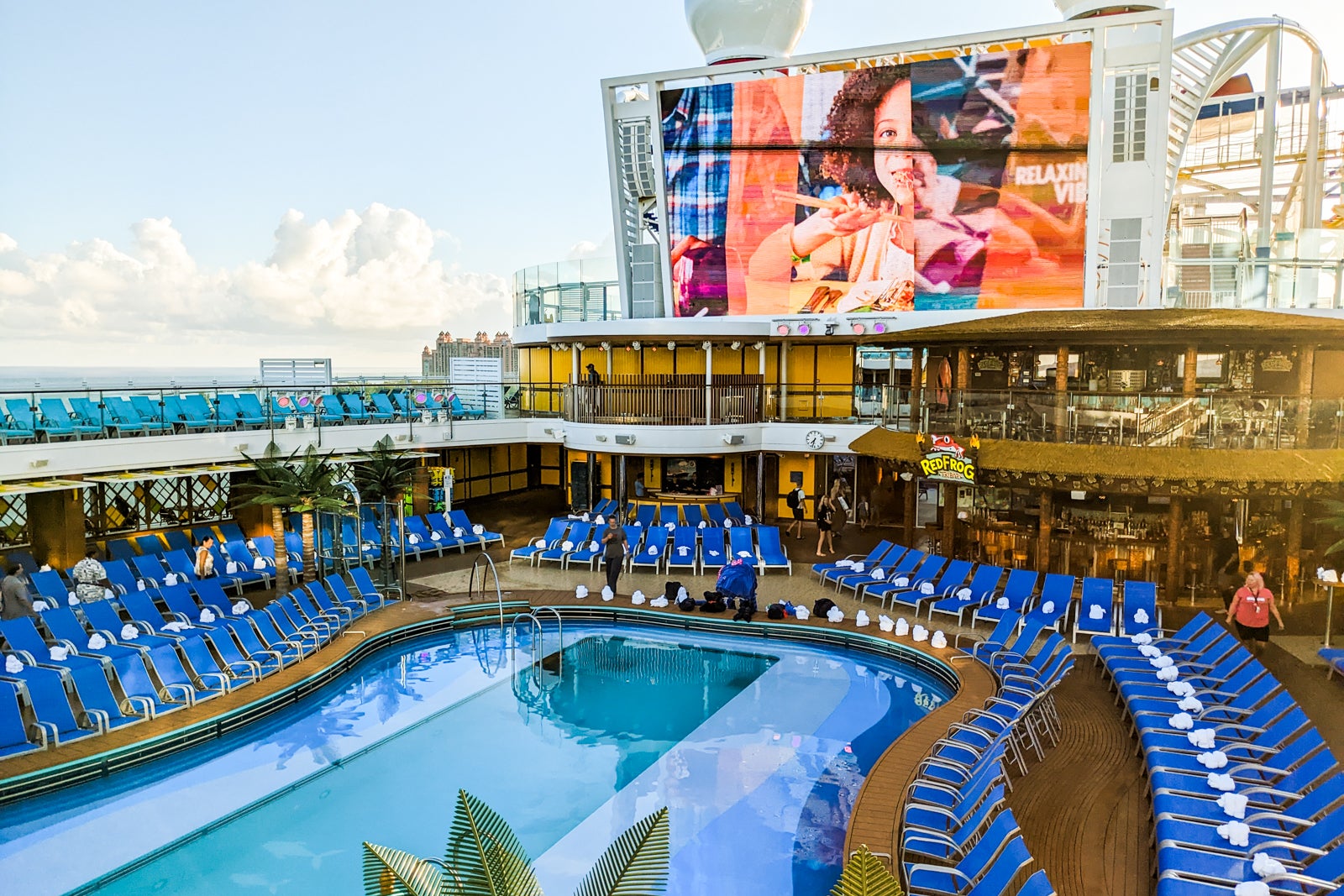
As noted above, dozens of cruise lines operate ships around the world. At last count, I had sailed with 42 different cruise companies, and I still hadn't hit every major brand — despite it being my full-time job for years to test cruise ships.
One thing to understand is that the lists of cruise lines you'll find here at TPG and at other travel sites include companies offering an incredible range of experiences.
When you think of a cruise ship, you may think of the giant floating megaresorts operated by the likes of Royal Caribbean and Norwegian Cruise Line that you see in TV advertisements — the kind of ships that carry thousands of passengers and have all sorts of gee-whiz amusements on their top decks.
But the world of cruising also includes companies that operate far smaller, more intimate vessels that carry a few dozen to a few hundred people. These ships have a completely different vibe. They're more like small boutique hotels that happen to float from place to place.
Related: How to book a cruise using points and miles
Additionally, you'll find adventure-focused "expedition" cruise companies that offer yet another completely different kind of cruising — one that involves heading to off-the-beaten-path places like Antarctica on small, hardy vessels designed for exploring. Some cruise companies specialize in ships that travel on rivers, while others operate sailing ships.
If you hear somebody say they'd never take a cruise because the ships are "too big" or "too crowded," you've met someone who has no idea what's out there.
You can cruise on a big, boisterous ship that carries 6,000 people or a tiny, yachtlike vessel that carries 60 people — and everything in between.
Related: Which cruise brand is best for you? A guide to the most popular lines
The cruise industry likes to break down its offerings into a bunch of oddly named categories, such as "contemporary" lines and "premium" lines. But to me, that's all marketing speak. Just ignore it when you see it. After three decades covering the industry, I like to break things down into the six categories you'll find below and (in a few cases) several subset categories, each of which appeals to a different type of vacationer.
The biggies
Seven big lines account for the majority of cruises taken by North Americans. They are, in order of size (when measured by passenger capacity):
- Royal Caribbean : 28 ships; 105,319 berths
- Carnival Cruise Line : 27 ships; 89,010 berths
- MSC Cruises : 22 ships; 77,832 berths
- Norwegian Cruise Line : 19 ships; 56,780 berths
- Princess Cruises : 16 ships; 50,116 berths
- Celebrity Cruises : 16 ships; 29,993 berths
- Holland America : 11 ships; 22,810 berths
If you are cruising for the first time, you will likely travel with one of the above brands — if only because they dominate the market for cruises among North Americans and, indeed, the world. As you can read in our ultimate guide to Royal Caribbean , this single brand alone accounts for nearly 20% of all cruises taken worldwide. Add in the next three biggest players — Carnival, MSC Cruises and Norwegian — and you're up to over 50% of the cruise business.
Related: The ultimate guide to Norwegian Cruise Line ships and itineraries
The cruise industry likes to label these seven lines as either "contemporary" (the first four on the list) or "premium" (the next three on the list). The idea is that the latter three brands offer a "premium" product to the first four. Such nomenclature is a throwback to the early days of cruising that I believe doesn't have much relevance anymore.
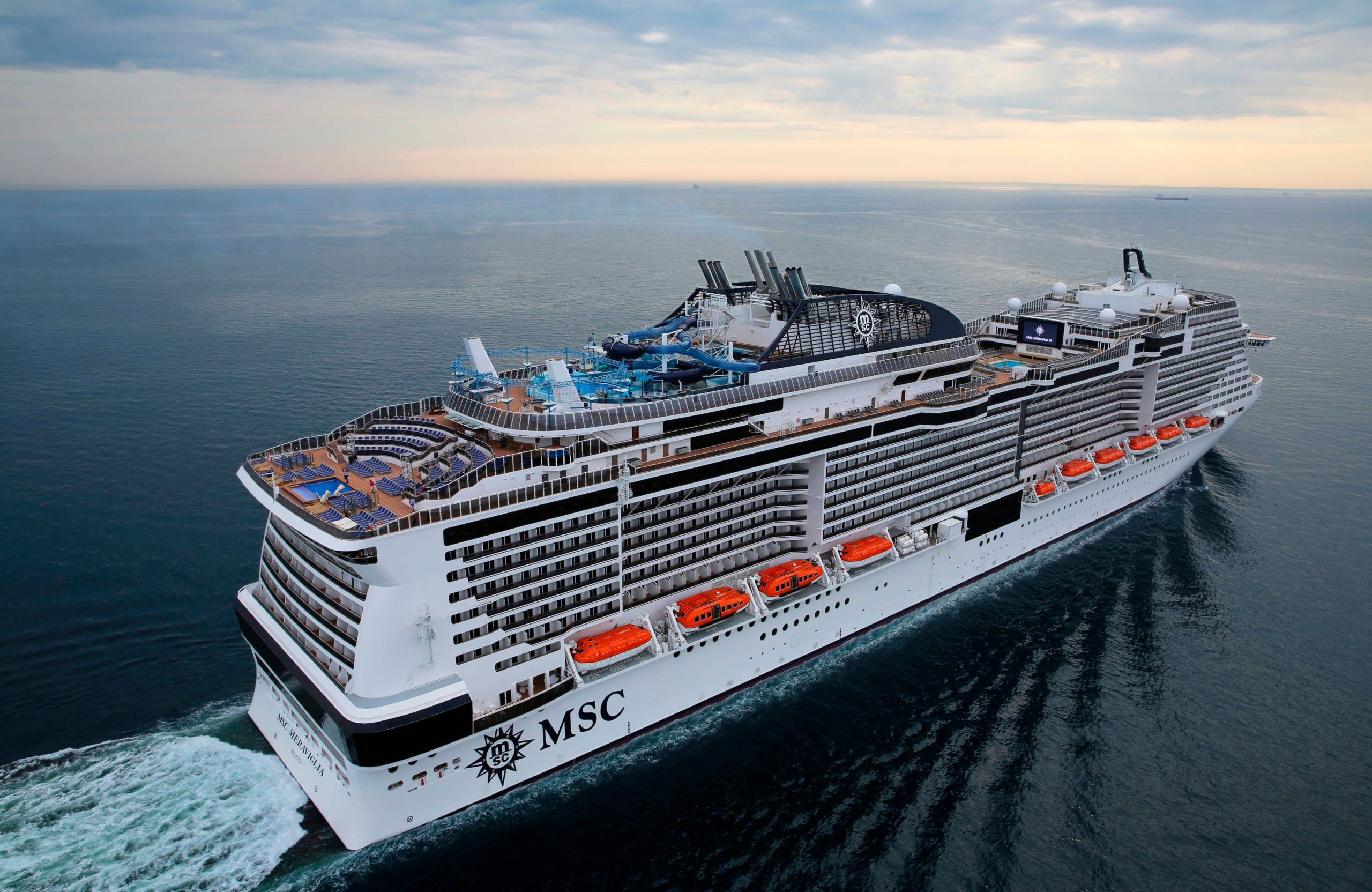
All of these brands have changed over the years, and the old distinctions no longer apply. For instance, you can get a "premium" experience in The Haven, an exclusive area on Norwegian ships, that will top anything you'll experience on many so-called premium ships. The experience on a Royal Caribbean ship can be just as elegant — or more so — as the experience on a Princess ship.
Related: The ultimate guide to Princess Cruises ships and itineraries
What all these brands have in common is that they operate relatively large, mass-market vessels with starting prices that are relatively affordable. Just keep in mind that the term "large" is relative. There is a wide variation among these brands in the size of their ships. The biggest Holland America ships, for instance, are less than half the size of the biggest Royal Caribbean ships and hold far fewer passengers.
Indeed, while Holland America vessels are "large" compared with many of the luxury, expedition and river ships that I will talk about later in this story, the brand often is labeled a "midsize" ship operator in the industry to differentiate it from the lines operating the biggest ships.
Related: The ultimate guide to Holland American cruise ships and itineraries
You'll also find that the size of the ships within the fleets of each of these brands can vary significantly. For instance, Royal Caribbean's biggest ships are three times the size of its smallest ships.
The key thing to know about the seven "biggies," as I call them, is that the type of experience they offer varies greatly. If you're booking a cruise for the first time, know that the seven lines are not necessarily interchangeable — even in cases where they offer similar pricing on similar itineraries. You may love one of these brands but not like another, depending on your tastes and preferences.
I break them down into three broad categories, each appealing to a different type of vacationer.
The floating megaresort lines
Are you a fan of big, bustling megaresorts with every amusement known to humans? You'll probably want to gravitate toward Royal Caribbean, Norwegian and MSC Cruises. These three brands are what I call the "floating megaresort lines" — lines that offer unusually giant ships that are the seagoing equivalent of land-based megaresorts such as Atlantis Paradise Island in the Bahamas.
Related: The ultimate guide to MSC cruises ships and itineraries
We're talking ships with a seemingly endless array of deck-top fun zones, from water parks and surfing pools to go-kart tracks and laser tag courses, as well as oodles of restaurants , bars, entertainment venues, spas, casinos and more. These ships can hold as many as 5,000 or even 6,000 people, not including the crew.
One of these giant vessels, Royal Caribbean's Icon of the Seas , has room for a whopping 7,600 passengers with every berth filled, and it often sails with almost every berth filled .
Related: The 10 wildest attractions you'll find on a cruise ship
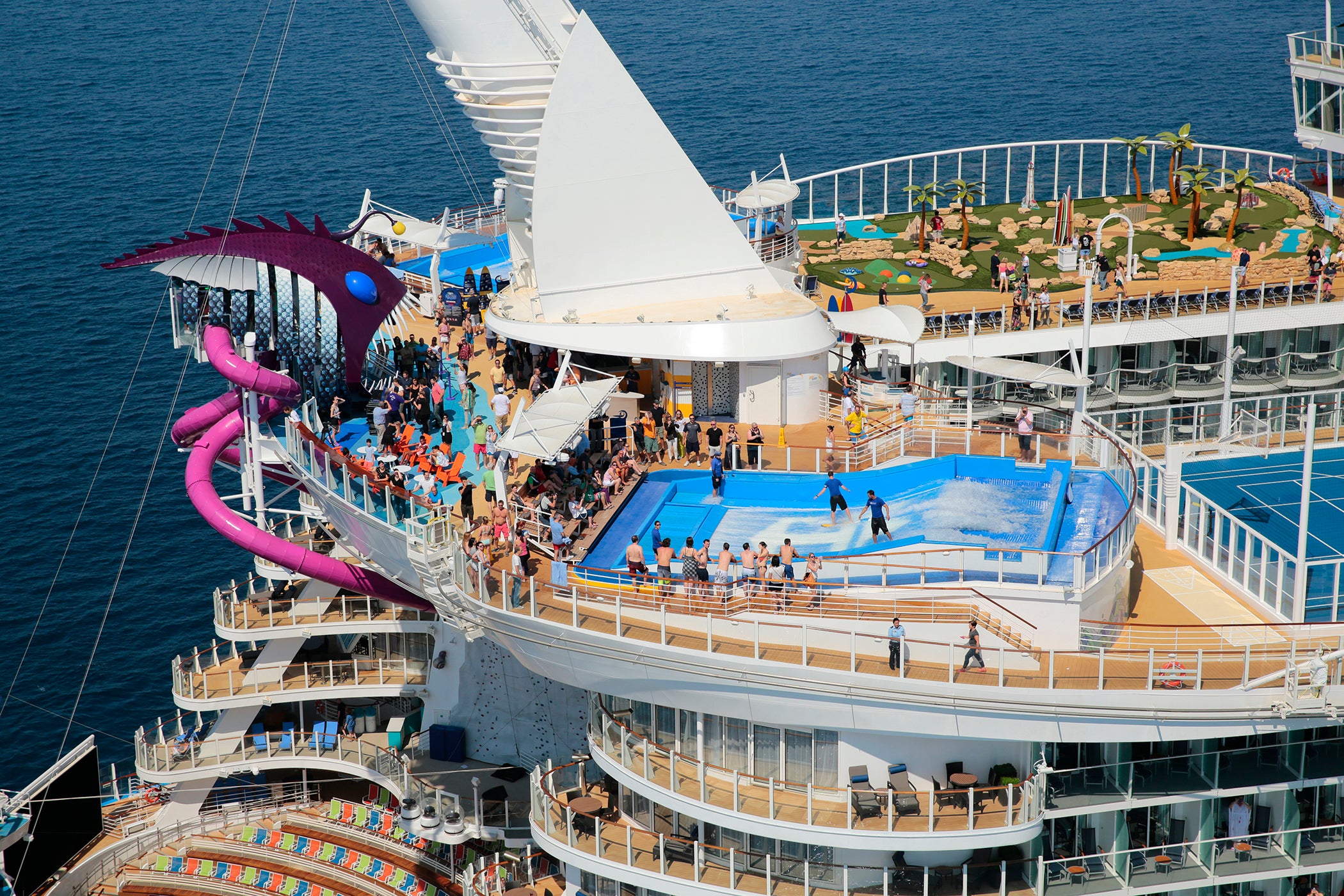
These are brands designed to appeal to a wide demographic, including families with children of all ages. They offer cabins for $100 per night, cabins for $1,000 a night and everything in between. The best way to describe them is that they are like the big Las Vegas resorts , except they float.
As noted above, the size of each ship these brands operate varies. In general, the newer vessels in their fleets are the biggest, most megaresortlike vessels.
The anti-floating megaresort lines
If a ship topped with the cruising equivalent of an amusement park doesn't sound like your idea of fun, your best bets among the biggies are Princess, Holland America and Celebrity. These are what I call the "anti-floating megaresort lines."
Each of these brands operates medium-size to big ships that are not loaded up with water parks, rock climbing walls, surfing simulators and all the other things that are hallmarks of the floating megaresort lines. These are more traditional cruise ships for people who don't want a floating theme park or Las Vegas resort experience.
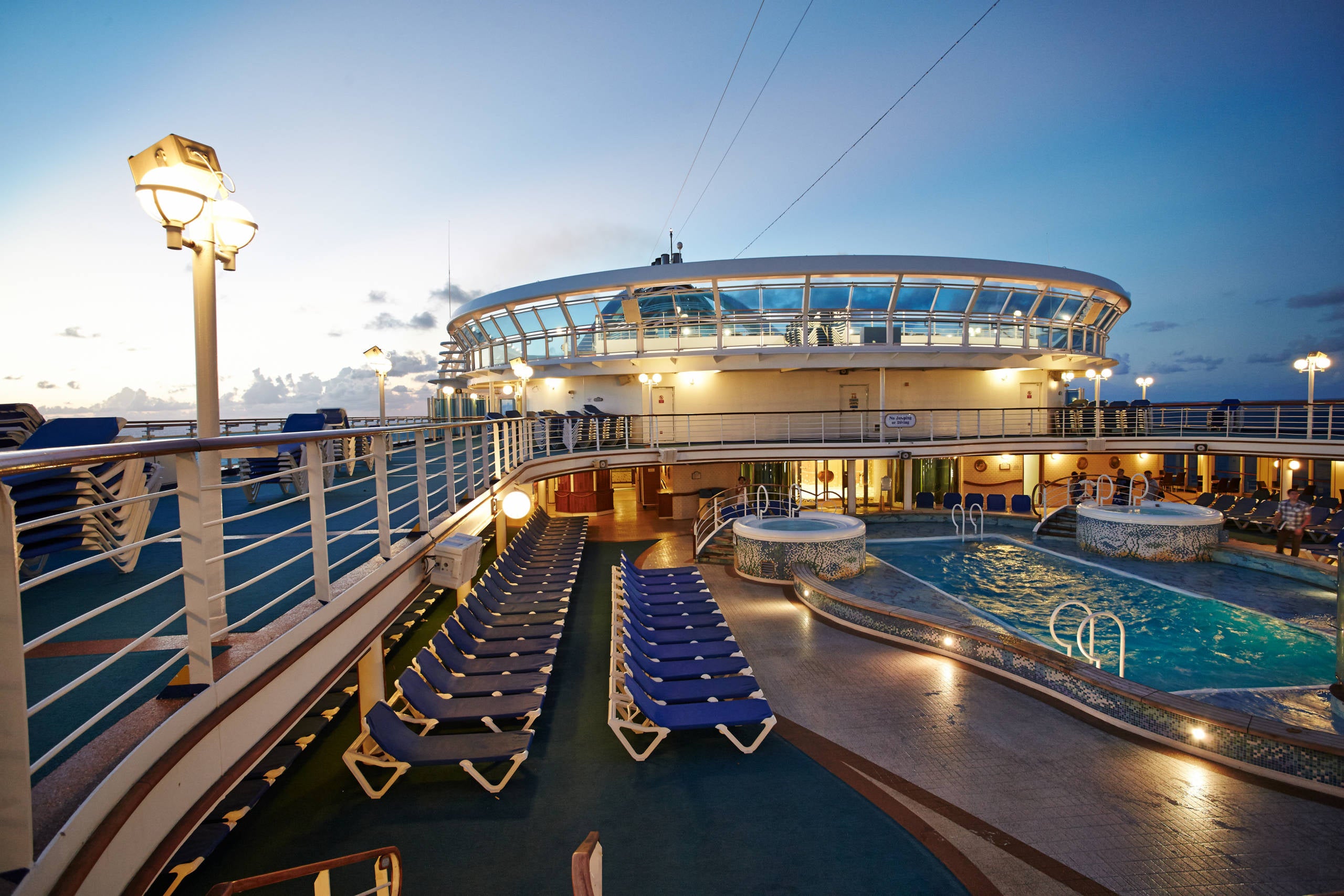
Instead of bustling attractions, the top decks of the ships these lines operate offer lots of quiet and relaxing pool and lounge areas where you can enjoy the experience of being at sea without a lot of hustle and bustle. Inside, the experience often revolves around dining, classic entertainment and a classy bar and music scene.
Related: The ultimate guide to Celebrity Cruises ships and itineraries
Compared with the floating megaresort lines, these brands draw more couples and fewer families. They skew older. At Princess, for instance, the average age of passengers is 57, and you see a lot of couples in their 50s, 60s and 70s on board.
At Holland America, the average age of passengers is closer to 70.
The budget option
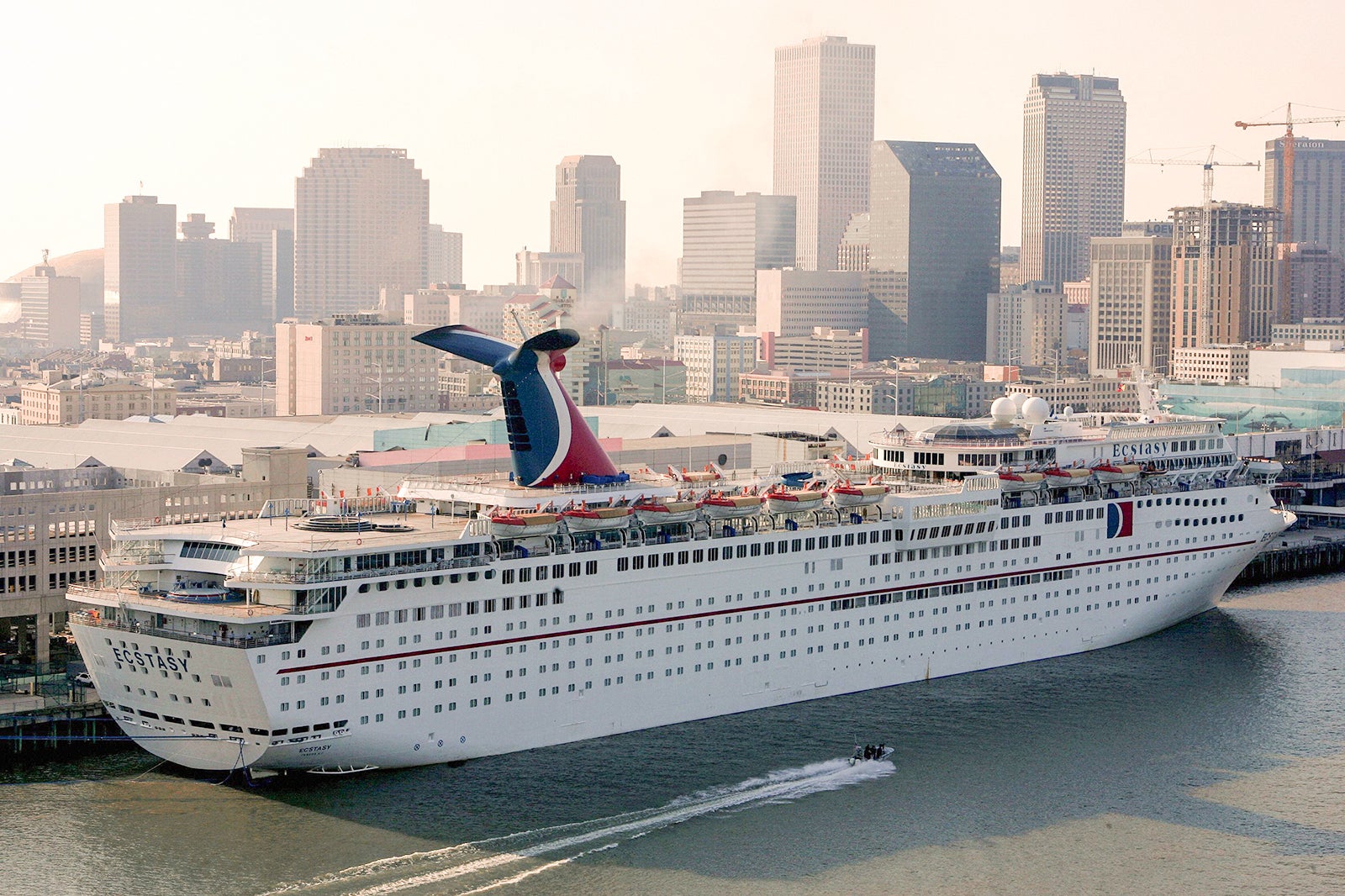
And then there's Carnival. The "fun ship" line is also the budget line among the biggies — a brand all about great value.
If you price the cost of a cruise for a family of four, you'll often find that a sailing on a Carnival ship costs as little as half the amount of a cruise on a Royal Caribbean ship, assuming similar cabins and itineraries. The differential is even greater when you compare the cost of a family vacation on a Carnival ship with the cost of a trip on a Disney Cruise Line ship, assuming similar cabins and itineraries.
In addition to being incredibly inexpensive, Carnival ships are casual, unpretentious, fun-focused and, yes, a bit loud and wild. This is, after all, the brand that long held a hairy chest contest around the pool deck on every voyage to a standing-room-only, hooting and hollering crowd.
Related: The 15 best cruise ships for people who never want to grow up
Like the "floating megaresort lines" above, Carnival is also known for amusements atop its ships, including water park areas, pedal-powered "sky rides" and — on its new ships Mardi Gras , Carnival Celebration and Carnival Jubilee — the first roller coasters at sea .
But, in general, Carnival doesn't operate vessels quite as big and venue-packed as the big ships of Royal Caribbean, Norwegian and MSC Cruises. In recent years, until the arrival of Mardi Gras, Carnival Celebration and Carnival Jubilee, it didn't have a single vessel among the top 30 biggest cruise ships in the world.
Carnival also doesn't target as wide a demographic as the floating megaresort lines — at least, when it comes to income levels. Its ships lack the range of higher-priced suites aimed at upscale travelers that you'll find on, say, a Royal Caribbean vessel. Among the biggies, it's really in a class of its own.
Related: The ultimate guide to Carnival Cruise Line ships and itineraries
Other biggies
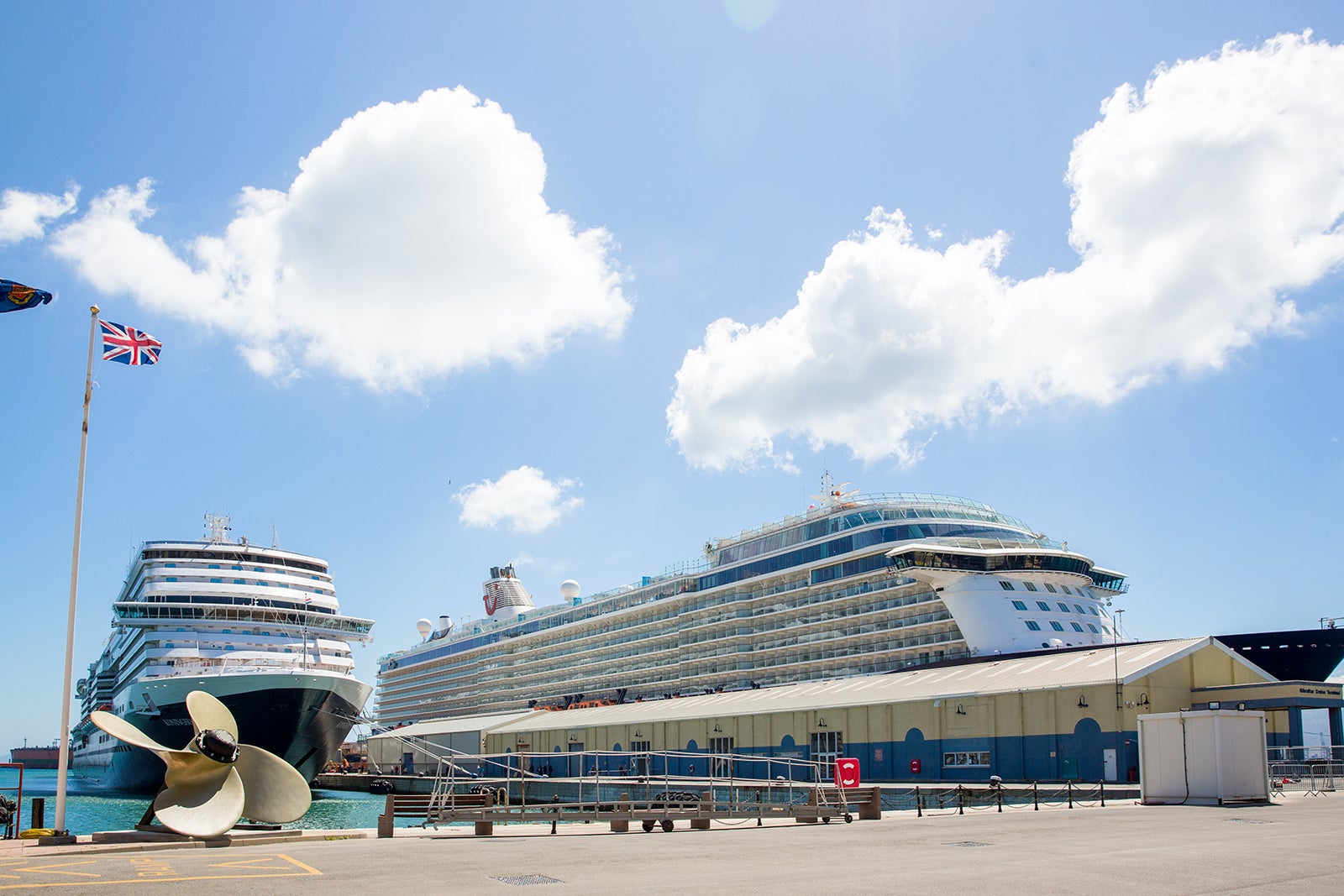
There are a few more relatively large, mass-market lines in the world that I didn't include in the list of biggies, as they primarily cater to non-American vacationers.
These lines include Germany's Aida Cruises and TUI Cruises, both aimed at German-speaking travelers with onboard programs conducted in German. Aida, in particular, is a significantly large line — larger than Celebrity or Holland America when measured by passenger capacity. But unless you live in Germany, Austria or Switzerland, you've probably never heard of it and would be unlikely to ever sail on it.
There's also Italy-based Costa Cruises, which draws about 80% of its customers from Europe but does market to Americans, and United Kingdom-based P&O Cruises. The latter draws about 98% of its customers from the U.K.
When talking about berths in this story, I am referring to the number of beds on a ship based on double occupancy per cabin — or what used to be known as "lower berths" in the industry. The totals do not include extra sleeping spots created with pull-down bunks and pullout sofas that can inflate the "total berths" number some cruise lines list for their ships.
Luxury cruise lines
If your idea of a vacation is being pampered at every turn, and you have lots of money to burn, you'll want to start your search for a cruise line among the luxury cruise operators.
More than half a dozen major luxury players market to North Americans, including:
- Regent Seven Seas Cruises
- Silversea Cruises
- Hapag-Lloyd Cruises
- The Ritz-Carlton Yacht Collection
- Explora Journeys
Compared with mass-market cruise ships, luxury cruise ships typically offer bigger cabins (often every cabin is a suite), more elegant dining and high levels of service. It's not uncommon for luxury ships to have nearly as many crew members as passengers.
Related: Inside the most expensive luxury cruise ship ever, Regent's Seven Seas Splendor
Luxury ships also typically offer more onboard space per passenger than mass-market ships. The "space ratio" of interior space to passengers can be twice as high. This means you'll have a lot of room to spread out and never experience crowds. At the same time, luxury ships generally are smaller than mass-market ships — often by a lot. That brings a much more intimate experience.
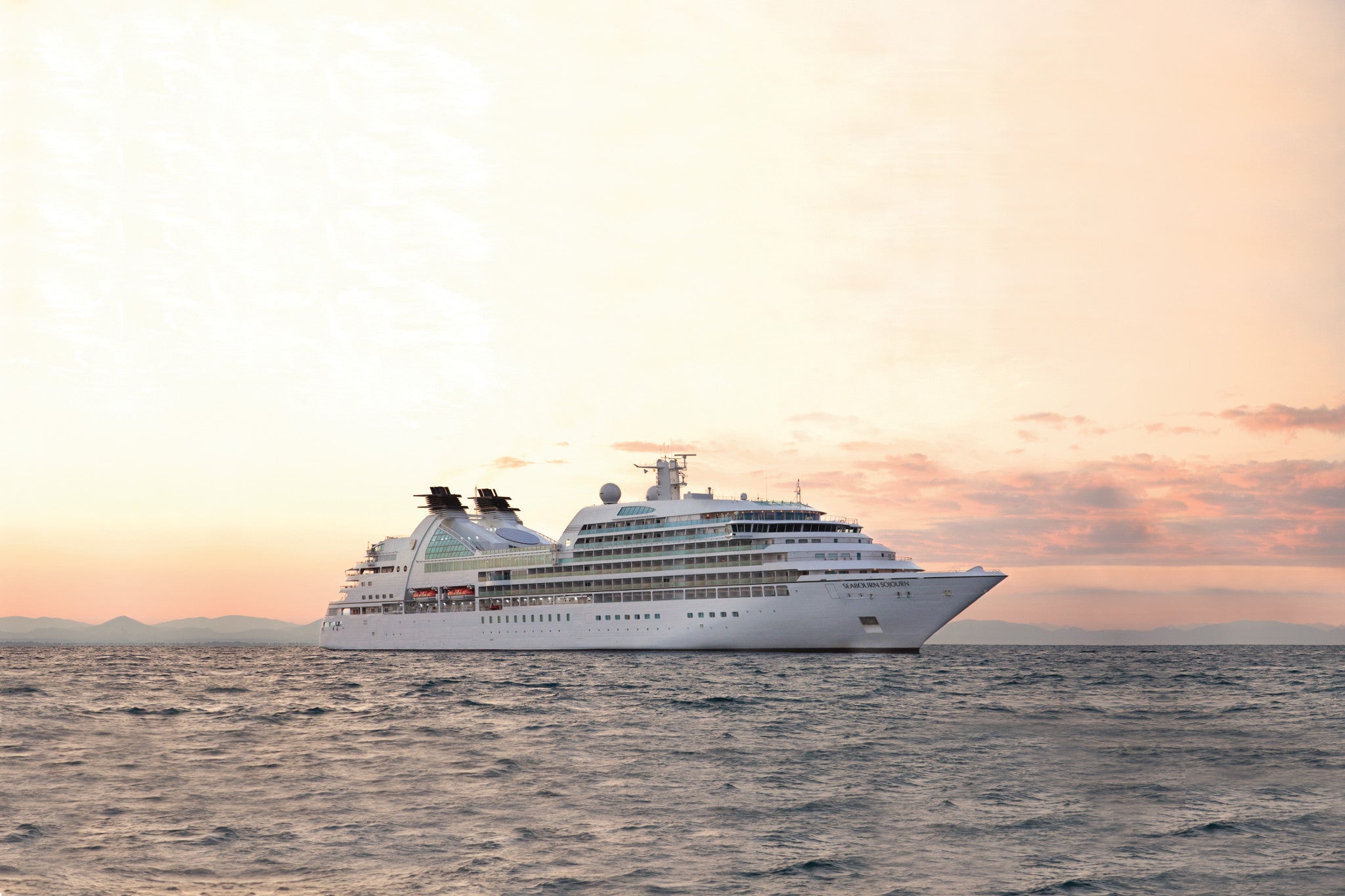
Within the luxury space, you'll find significant differences in the size and style of the ships. Five of Regent's six ships, for instance, are relatively large and famously elegant (think: soaring spaces, lots of marble and crystal chandeliers). They carry 700 to 750 passengers. (The line also has one significantly smaller vessel that carries 490 passengers.)
Five of Seabourn's seven vessels, with room for 450 to 600 passengers, are noticeably smaller than Regent's larger vessels. The Ritz-Carlton Yacht Collection — a new line that debuted in 2022 — launched with a vessel that carried just 298 passengers.
With each step down in size, you can expect fewer onboard venues, such as restaurants and lounges. But you also may find the experience more intimate. Smaller ships can sometimes access off-the-beaten-path ports that bigger ships can't.
What all the luxury lines have in common is that they are pricey. You can easily pay several times as much for a luxury cruise as a mass-market cruise. Indeed, it's not uncommon to see cabins on luxury cruises listed for $1,000 or more per person, per day.
Related: The $11,000-a-night cruise ship suite that's bigger than a house
However, comparing such high pricing to the pricing of mass-market cruises can be misleading. That's because luxury lines typically include almost every extra charge you could imagine — drinks of all types, gratuities, Wi-Fi and even flights to the ship — in their base fares.
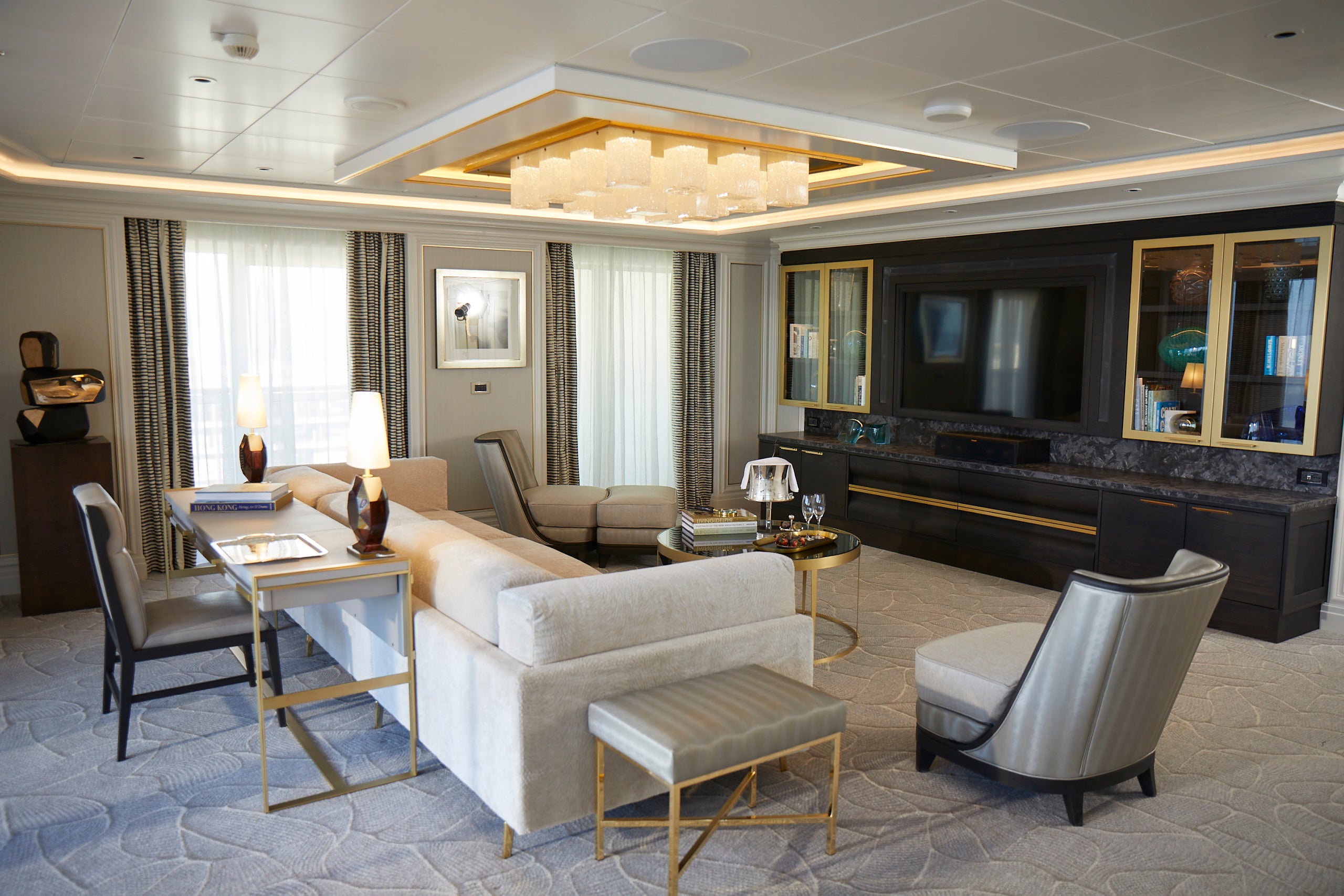
Note that one of the luxury lines mentioned above, Hapag-Lloyd Cruises, is a German line that operates many of its cruises in German only. But in recent years, Hapag-Lloyd Cruises has occasionally marketed to English speakers with specific sailings operated on a bilingual basis. While relatively unknown in North America, it operates several of the most elegant, spacious and service-focused cruise vessels anywhere in the world.
Also of note: Several new small luxury cruise lines are on the way. Luxury hotel company Four Seasons is building a fleet of small luxury cruise vessels that will begin debuting in 2026. Luxury purveyor Aman Resorts also plans to enter the cruise business in the coming years, as does the Orient Express brand .
Upscale-but-not-quite-luxury lines
Several additional cruise lines offer an upscale, elegant experience that isn't quite as white-glove as what you'll find on the luxury lines above but is still wonderful. These include:
- Oceania Cruises
- Windstar Cruises
- SeaDream Yacht Club
For the most part, these lines operate ships nearly as small and intimate as the luxury lines' ships. Oceania vessels carry around 700 to 1,250 passengers, for instance, while Viking ships carry 930 passengers. (We're talking about the line's ocean ships; Viking also operates river ships, which we'll discuss below.) Windstar vessels are even smaller, with room for 148 to 342 passengers. SeaDream's two yachtlike vessels hold just 112 passengers apiece.
Like luxury lines, these lines have a high staff-to-passenger ratio — though often not quite as high as the luxury lines. They also generally offer more space per passenger than mass-market lines and bigger cabins — but, again, not quite as big as what the luxury lines offer.
They're also generally less expensive than the luxury lines, but they don't always include as much in their base fares. You'll likely pay extra for gratuities and some drinks on ships in this cohort, for instance.
Compared with the mass-market biggies, the entry-level pricing of this group still is significantly more expensive. Often, an entry-level cabin on a ship operated by these lines is on par with a suite on one of the mass-market lines.
Note that quantifying which lines are "luxury" and which are "upscale but not quite luxury" is a tough business. Fast-growing Viking, notably, is careful to not call itself a luxury line. However, it offers an experience on its ocean ships that some would call luxury, with spectacular onboard service, high-end eateries and many inclusions in its base fares, such as a shore excursion in every port. To me, it straddles the line between the two categories.
Viking also has an ocean ship fleet that is all new. Every one of its ocean ships was built in the last nine years. That's relatively unusual among this group of lines.
Three of the lines listed in this segment — Azamara, Windstar and SeaDream — have fleets entirely made up of vessels that are at least a couple of decades old. Often, they are ships that were originally built as luxury vessels and were state-of-the-art in their time but no longer have as wide an array of amenities as newer luxury ships.
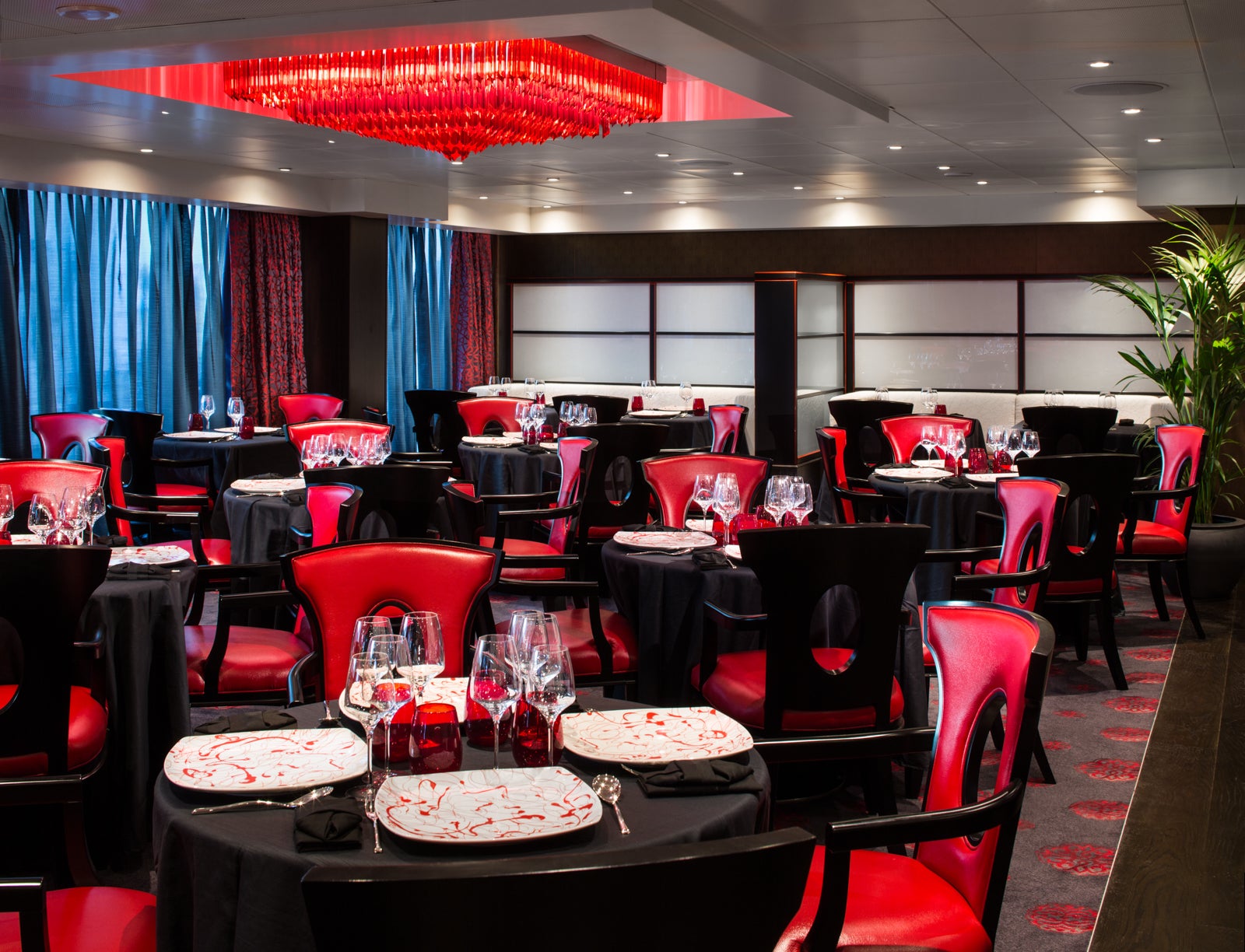
Notably, many cabins on Windstar and SeaDream vessels lack balconies — a feature that was rare on cruise ships a few decades ago but now is standard. All four Azamara ships and the four oldest Oceania ships have relatively small cabins compared with cabins on today's luxury ships.
Upscale line trivia : The four Azamara ships and the four oldest Oceania ships are sister vessels. They all once belonged to long-defunct Renaissance Cruises. You'll sometimes hear cruising aficionados refer to them by their Renaissance-related class name, the R Class.
Expedition lines
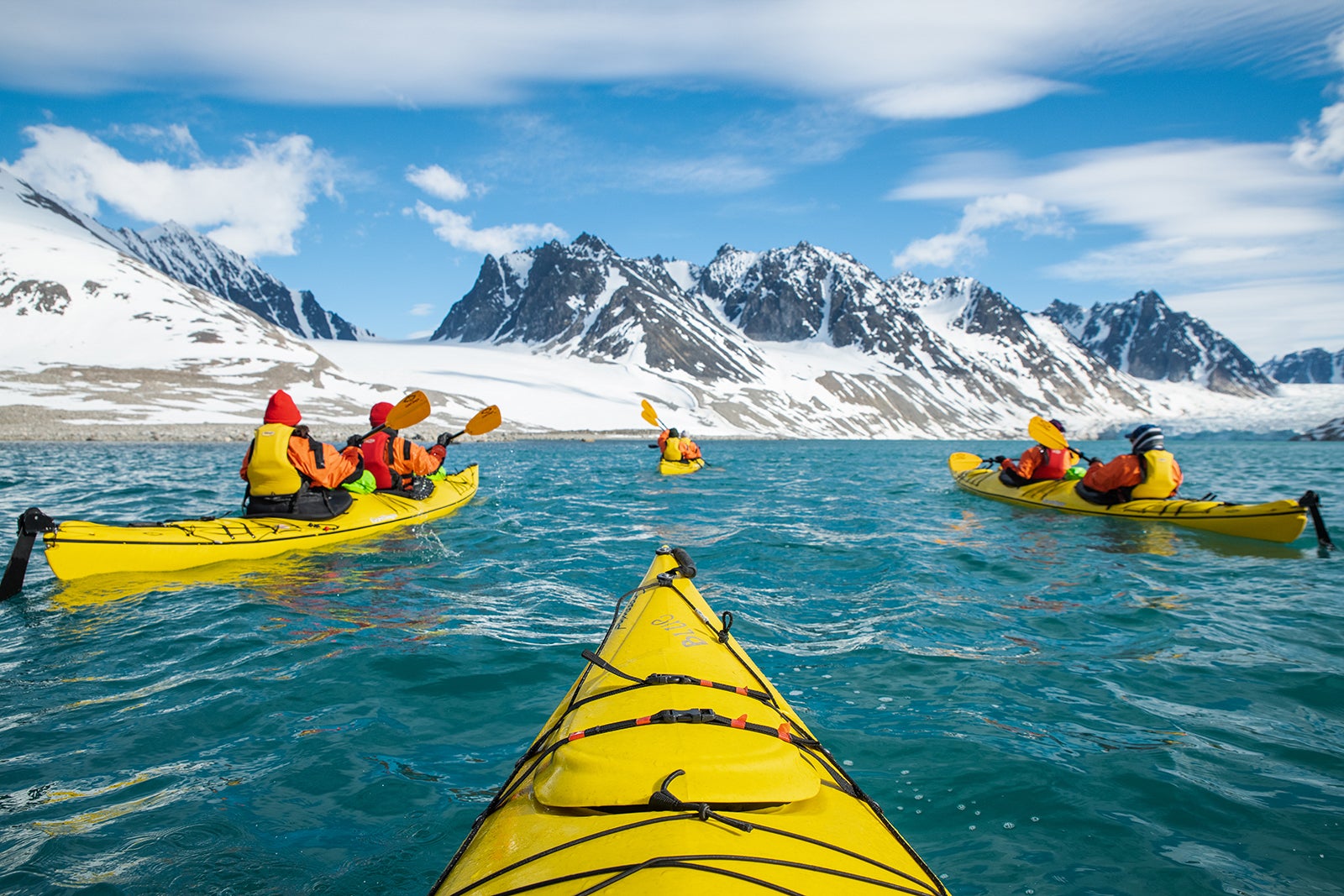
One of the fastest-growing segments of cruising in recent years has been "expedition cruising," a type of cruising that involves traveling to remote, hard-to-reach places such as Antarctica on small, hardy vessels that carry their own landing craft to get you ashore.
This type of cruising is so different from what the big mass-market lines offer that it might as well be considered an entirely different form of travel.
Expedition cruising is all about getting you to off-the-beaten-path places that often have little or no land-based infrastructure. You are traveling to these places by seagoing vessel because that's the only way to reach them.
Related: Expedition cruises: The ultimate guide to cruising to remote, hard-to-reach places
On an expedition cruise, the focus is often on remote wilderness areas and the wildlife that inhabits them. Expedition leaders with deep knowledge of the destination will accompany you on your journey. Scientific experts such as biologists, geologists, ornithologists and a historian may also be on board to lead landings and give informative talks.
Big expedition cruise destinations include Antarctica and remote parts of the Arctic , such as the icy islands of Svalbard, Franz Josef Land and Canada's Northwest Passage. The wildlife-filled Galapagos, where many islands are uninhabited, is another classic expedition cruise market (with a vessel ecosystem all its own, thanks to unusual local regulations).
You'll also find expedition cruise vessels operating in remote parts of South America, Asia and the South Pacific, as well as some more mainstream destinations like Alaska.
The remote and rugged Kimberley region of Australia also is booming as an expedition cruise destination .
Notable players in the expedition cruising space include:
- Aurora Expeditions
- Atlas Ocean Voyages
- Lindblad Expeditions
- Hurtigruten
- Quark Expeditions
- Scenic Luxury Cruises
- Oceanwide Expeditions
- Poseidon Expeditions
Eagle-eyed readers will notice that four lines listed above — Silversea Cruises, Hapag-Lloyd Cruises, Seabourn and Viking — also appeared in this story's listing of luxury or almost-luxury lines. The four brands are major players in both the traditional luxury ship market and the expedition cruise ship market.
There is a growing trend of traditional cruise lines getting into the expedition cruise space. Two of the brands mentioned above — Seabourn and Viking — only added their first expedition ships in 2022 .
Additionally, luxury river cruise specialist Scenic Luxury Cruises & Tours recently unveiled its first two expedition ships. The past three years have also brought an all-new luxury expedition cruise company, Atlas Ocean Voyages.
I also include UnCruise Adventures in this category of lines. It's a hard-to-categorize little line specializing in adventurous, outdoorsy, ship-based trips in remote parts of Alaska. It operates the tiniest of vessels, with the biggest among them holding just 86 passengers. Its trips revolve around hiking, kayaking, whale watching, birding and exploring by skiff.
Historically, expedition ships have carried under 200 passengers — a manageable number for an exploration-focused vessel operating in a remote location such as Antarctica — but a growing number of expedition ships carry more. Viking designed its new expedition ships to carry 378 passengers. Some new Hurtigruten expedition vessels are designed for around 500 people.
Note that expedition cruises are expensive, with pricing on par with traditional luxury cruises. Expedition ships are expensive to build on a per-berth basis and require a relatively high ratio of staff to passengers to operate compared with mass-market cruise ships.
River cruise lines
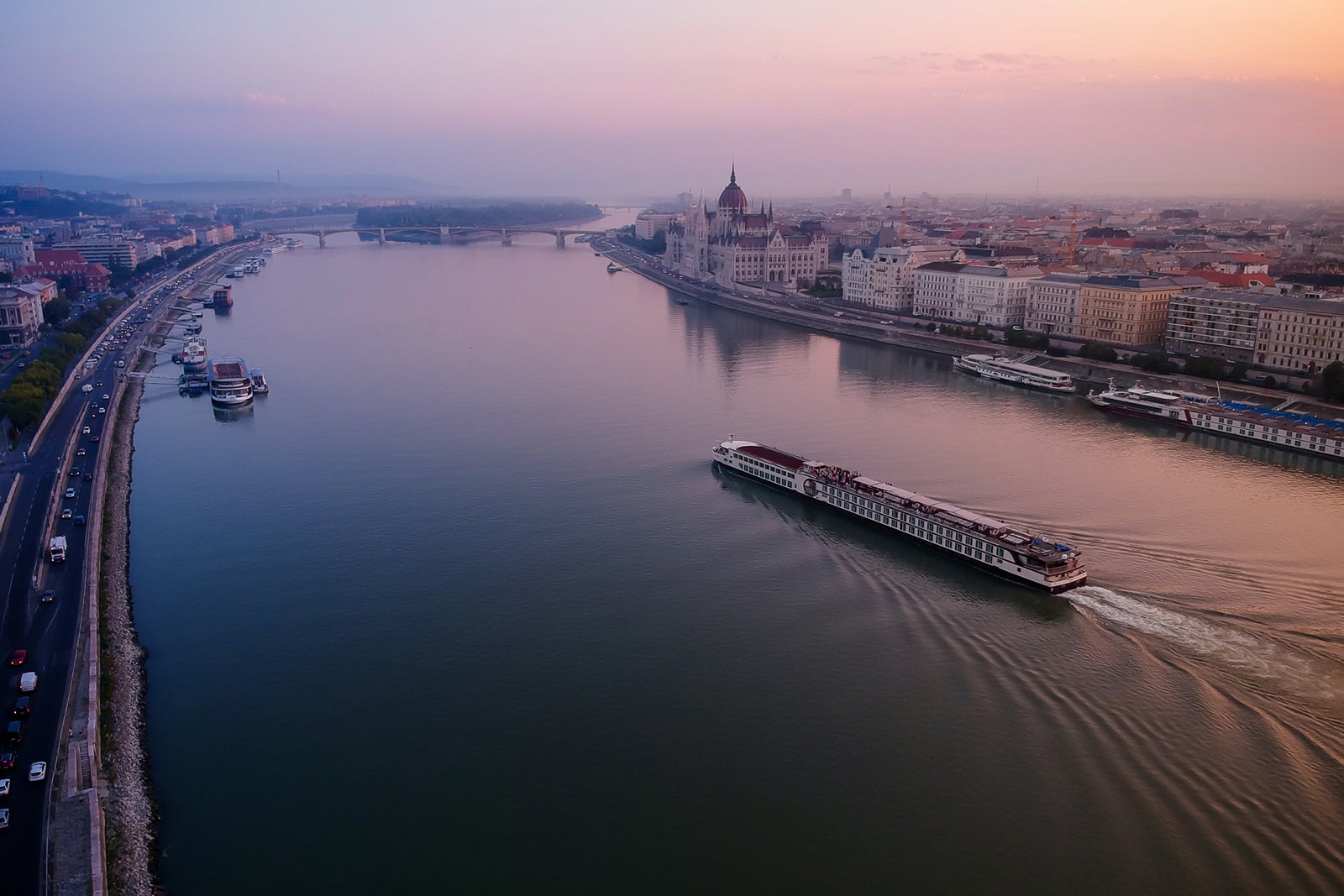
All the lines I have discussed so far have one thing in common: They operate oceangoing ships. Another entire segment of cruising revolves around travel on rivers.
Like expedition cruising, this has been a fast-growing segment of the cruise world in recent years, with capacity among the major river cruise lines growing at a rapid pace.
Much of the growth in river cruising has been driven by the marketing efforts and aggressive shipbuilding program of a single line, Viking. Founded in 1997 with four river vessels, Viking has exploded into a cruising colossus over the past 15 years with the rollout of more than 60 new river ships. (Starting in 2015, it also began adding ocean ships, which we discuss in the "upscale" segment above.)
Viking now accounts for about half of all river cruises taken by North Americans, but it's not the only significant river cruise player. Other major brands that market river cruises to North Americans include:
- AmaWaterways
- Avalon Waterways
- Uniworld Boutique River Cruises
- Emerald Waterways
- Scenic Luxury Cruises & Tours
- American Cruise Lines
- American Queen Voyages
- Grand Circle Cruise Line
As you can see, there is no shortage of companies in the river cruise business. The list above doesn't even include river lines that primarily cater to Europeans, of which there are many, including France-based CroisiEurope and Germany's Nicko Cruises.
On many rivers, the vessels these lines operate are all roughly the same size due to specific size limitations caused by lock sizes and bridge heights. As a result, there is less variation among river ships than there is among ocean ships. That said, the brands above offer a range of experiences and price points.
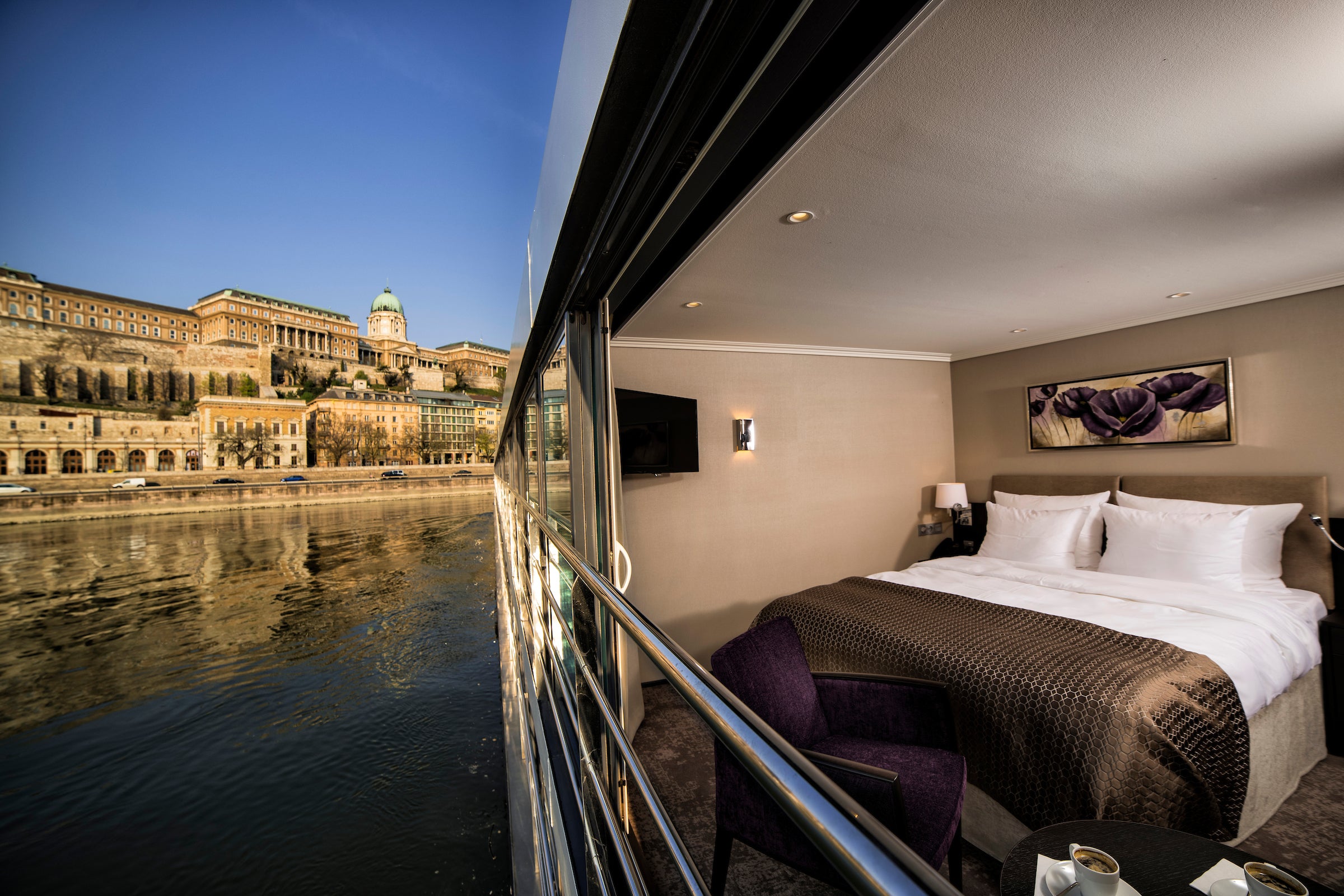
While the outsides of river ships often look similar, their interiors can vary greatly, with some being more luxurious and pampering than others.
One way to judge the relative luxury level of river lines operating in Europe, in particular, is to look at how many passengers each puts in one of its 135-meter vessels. That's the most common standard river ship size on European waterways due to the lock sizes in Europe.
River cruise giant Viking, for instance, designs its 135-meter vessels to carry 190 passengers. Avalon Waterways and AmaWaterways put 166 and 156 passengers, respectively, on the same-length ships. At Tauck, the number is 130 passengers.
As a rule of thumb, the ships with fewer passengers offer a more premium experience — and are priced accordingly. You'll pay a lot more to sail with Tauck than Viking.
Niche lines
Finally, there are lots of little (and in some cases tiny) cruise lines that I call "niche" lines. These lines offer a specialized product, often with just a handful of ships.
In some cases, these lines only operate in a certain part of the world, such as Alaska or the South Pacific. In other cases, they only cater to a narrow range of people, such as sailing aficionados.
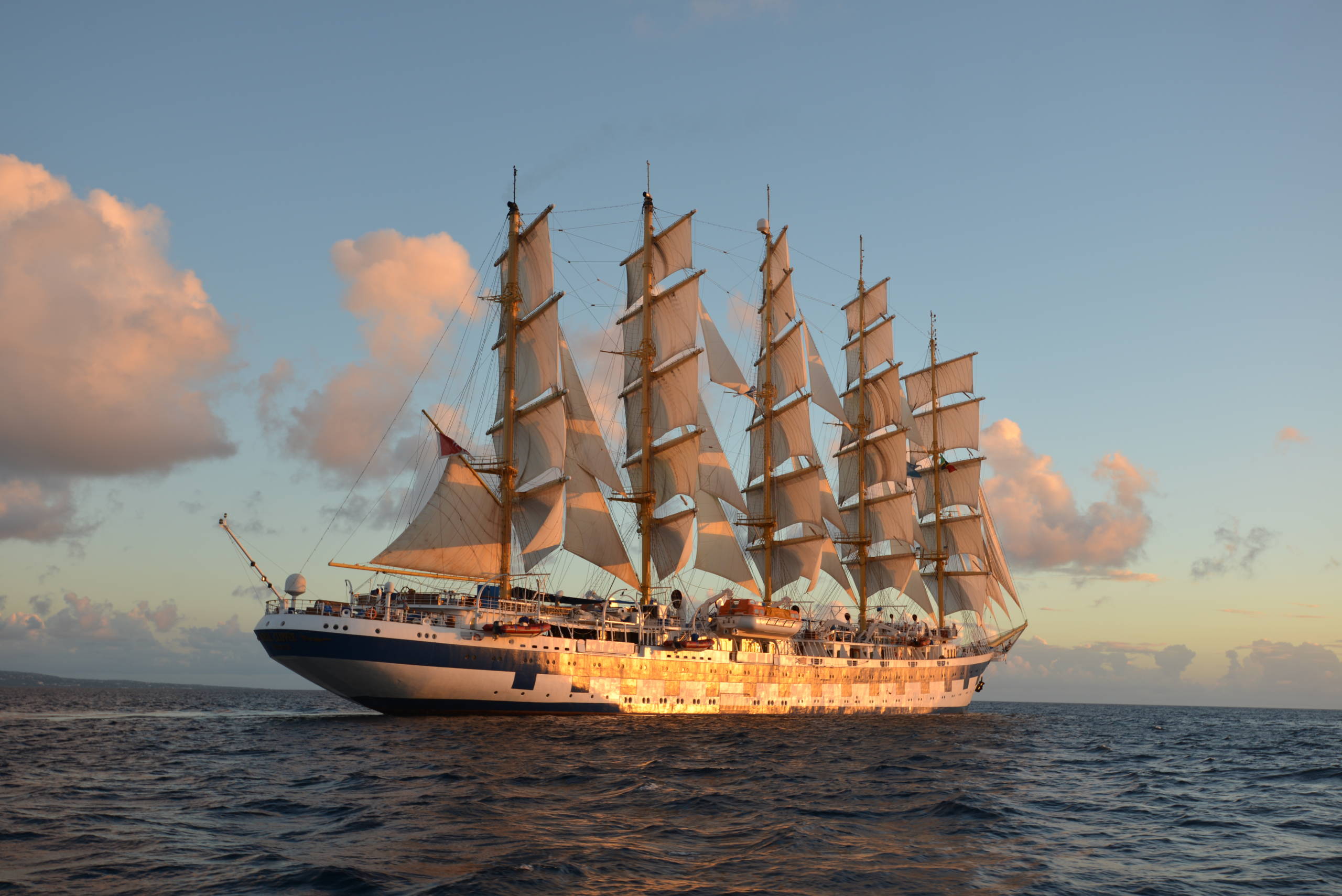
You may end up loving these lines, but you probably won't sail with them all the time — if only because they don't offer all the types of cruises you will want to experience.
Among these lines, I include the following (with its specialty in parentheses):
- Disney Cruise Line (cruises for Disney fans and families)
- Virgin Voyages (cruises for adults without kids looking to let loose)
- Paul Gauguin Cruises (South Pacific cruises)
- Star Clippers (cruises for sailing fans)
- Sea Cloud Cruises (cruises for sailing fans)
- Cunard Line (cruises for ocean liner enthusiasts, Anglophiles and globe-trotters)
- American Cruise Lines (U.S. waterway cruises)
- Alaskan Dream Cruises (Alaska cruises)
- Celestyal Cruises (Greece and Turkey cruises)
- Grand Circle Cruise Line (small-ship sailings)
- Victory Cruise Lines (small-ship sailings on the Great Lakes)
Even the biggest of these lines — Disney — is just one-tenth the size of industry leader Royal Caribbean when measured by passenger capacity. Some of these brands, such as Paul Gauguin Cruises and Alaskan Dream Cruises, are barely 1% the size of the biggest brands.
Paul Gauguin only has a single, 332-passenger ship, Paul Gauguin. It operates a very specialized set of French Polynesian itineraries out of Tahiti to destinations such as Bora Bora and Moorea that draw a lot of honeymooners and couples celebrating anniversaries.
Related: Why it's easier to meet new people smaller cruise ships
A few of these lines, such as American Cruise Lines and Grand Circle, you will have noticed, were already included in the listings above for river lines. They fit in both categories, as they operate river ships but also some very small oceangoing vessels that offer niche itineraries.
All of these lines are niche players in the industry. But, in many cases, they are well known in the travel world for what they do. Disney may have just five cruise ships — compared with 28 for Royal Caribbean — but if someone says the words "family cruise," Disney will likely be the first line to come to mind.
Related: Disney Wish: 9 things to know about one of Disney's newest ships
Star Clippers and Sea Cloud Cruises, which both operate sailing ships, are popular with people who want to experience what it was like traveling in the days before steam power. American Cruise Lines has developed a significant niche offering small-ship trips along U.S. coastal waterways and rivers, including voyages along the coast of Maine, up the Hudson River and in the Chesapeake Bay.
Dating to the 1800s, U.K.-based Cunard is particularly known for its transatlantic sailings between New York and Southampton, England. Operated by the iconic Queen Mary 2, the sailings are a throwback to the days of grand ocean liner travel. Cunard also is known for its annual around-the-world sailings that include stops in dozens of countries.
Bottom line
The cruise industry includes many lines offering a wide range of experiences. No two are exactly alike. If you want to find the right cruise line and ship for you, do your homework in advance. Think hard about the type of vacation experience you want, and read up on the lines and ships that seem the closest fit for your travel style.
Here at TPG, we offer a growing array of guides to individual cruise lines, as well as ship-specific reviews.
Planning a cruise? Start with these stories:
- The 5 best cabin locations on any cruise ship
- The 8 worst cabin locations on any cruise ship
- 21 tips and tricks that will make your cruise go smoothly
- 15 ways cruisers waste money
- What to pack for your first cruise
- How to get a deal on a cruise

IMAGES
VIDEO